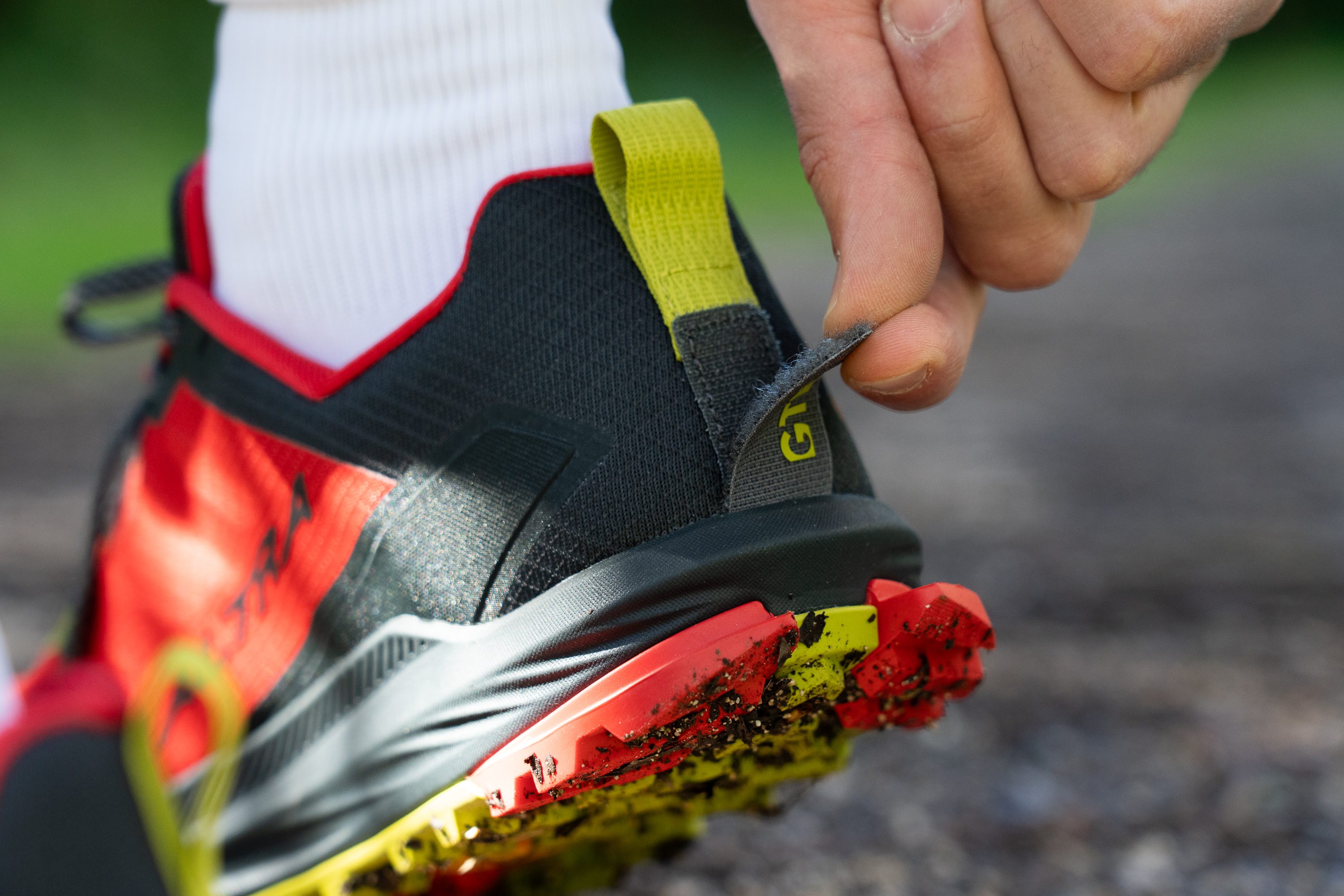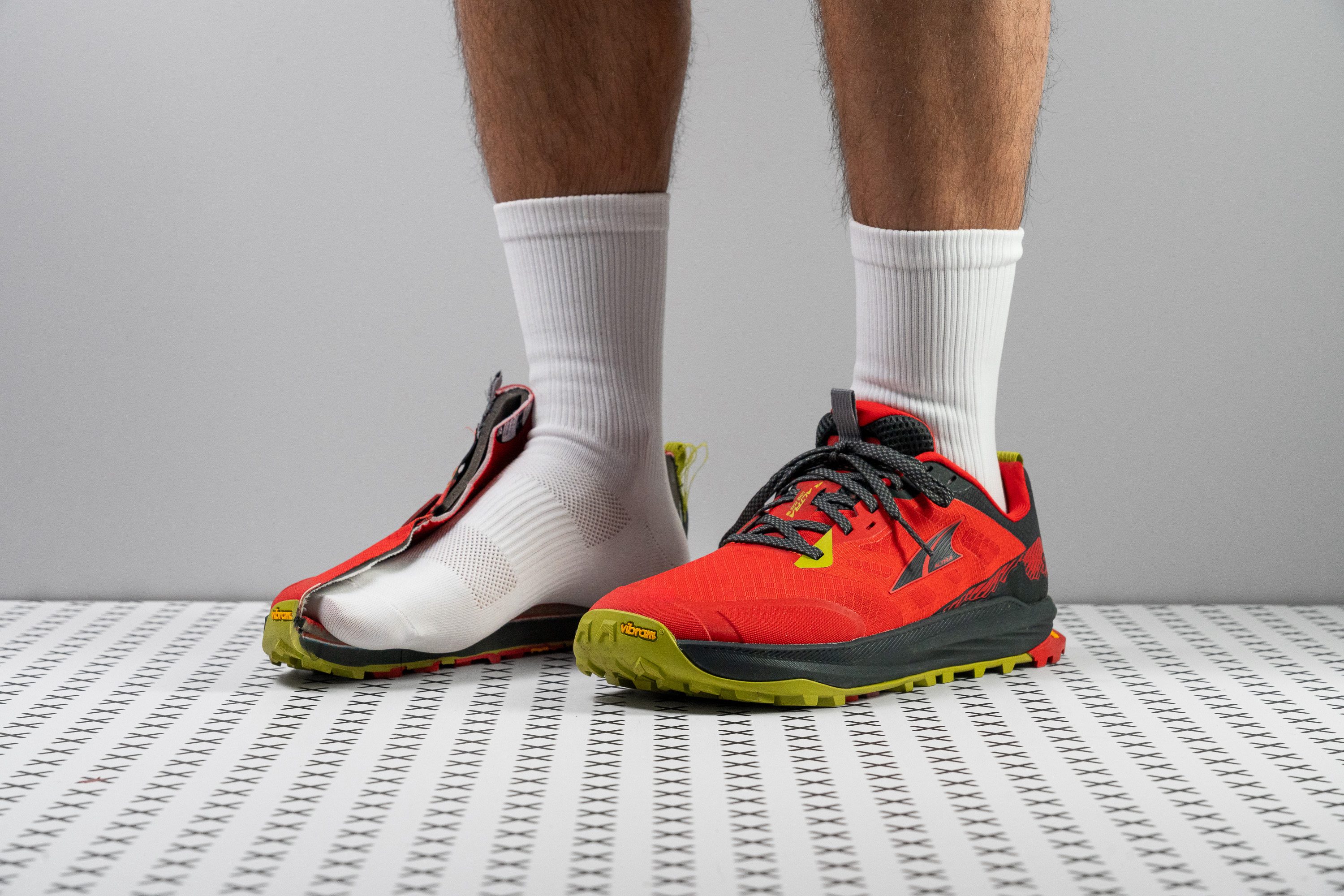Nuestra conclusión
Pros
- Drop cero
- Parte delantera espaciosa en forma de pie
- Por fin disponibles con Vibram
- Antepié más estable
- Perfil plano, pisada natural
- Sistema de cordones seguro
- Siguen teniendo una suela baja
- Versiones estándar y ancha
- Duraderas
Contras
- Pesadas para su tamaño
- Más rígidas que las versiones anteriores
- Poco transpirables
- Que haya 2 versiones con suelas exteriores distintas es confuso
Veredicto de los usuarios
- Top 5% entre zapatillas de trail running
- Top 10% entre zapatillas de running neutras
- Top 12% más vendidas zapatillas de running
Comparativa
Las zapatillas de running más parecidas
+ + Añadir unas zapatillas | |||||
|---|---|---|---|---|---|
| Puntuación global | 91 Excelentes | 81 Buenas | 80 Buenas | 78 Aceptables | |
| Precio | 150 € | 130 € | 160 € | 130 € | |
| Terreno de trail | SencilloModerado | Sencillo | SencilloModerado | SencilloModerado | |
| Arch support | Neutral | Neutral | Neutral | Neutral | |
| Peso laboratorio Peso marca | 10.9 oz / 309g 10.4 oz / 295g | 9.2 oz / 261g 10.7 oz / 303g | 9.5 oz / 269g 9.8 oz / 277g | 9.6 oz / 272g 9.1 oz / 258g | |
| Drop laboratorio Drop marca | 0.0 mm 0.0 mm | 0.6 mm 0.0 mm | -0.1 mm 0.0 mm | 0.1 mm 0.0 mm | |
| Técnica de carrera | Medio/antepié | Medio/antepié | Medio/antepié | Medio/antepié | |
| Talla | Tallan bien | Tallan un poquito pequeño | Media talla más pequeñas | Tallan un poquito pequeño | |
| Rigidez de la mediasuela | Equilibrada | Equilibrada | Equilibrada | Equilibrada | |
| Diferencia de la rigidez de la mediasuela en frío | Normal | Normal | Pequeña | Normal | |
| Durabilidad de la parte delantera | Decente | Decente | Buena | Muy mala | |
| Durabilidad del acolchado del talón | Media | Baja | Media | Media | |
| Durabilidad de la suela exterior | Buena | Mala | Buena | Buena | |
| Transpirabilidad | Baja | Baja | Media | Alta | |
| Anchura / ajuste | Ancha | Media | Ancha | Media | |
| Anchura de la parte delantera | Ancha | Ancha | Ancha | Ancha | |
| Flexibilidad | Moderada | Rígida | Rígida | Rígida | |
| Rigidez torsional | Moderadas | Moderadas | Rígidas | Moderadas | |
| Rigidez del contrafuerte del talón | Flexible | Flexible | Moderado | Flexible | |
| Profundidad del dibujo de la suela | 3.8 mm | 1.5 mm | 3.0 mm | 3.3 mm | |
| Altura de la suela en la zona del talón laboratorio Altura de la suela en la zona del talón marca | 23.3 mm 25.0 mm | 23.8 mm 27.0 mm | 28.6 mm 29.0 mm | 22.1 mm 20.5 mm | |
| Antepié laboratorio Antepié marca | 23.3 mm 25.0 mm | 23.2 mm 27.0 mm | 28.7 mm 29.0 mm | 22.0 mm 20.5 mm | |
| Anchuras disponibles | EstándarAncho | Estándar | Estándar | Estándar | |
| Estación | Todas las estaciones | Todas las estaciones | Todas las estaciones | VeranoTodas las estaciones | |
| Removable insole | ✓ | ✓ | ✓ | ✓ | |
| Orthotic friendly | ✓ | ✓ | ✓ | ✓ | |
| Clasificación | #32 Top 9% | #289 21% inferior | #303 17% inferior | #322 12% inferior | |
| Popularidad | #42 Top 12% | #272 26% inferior | #138 Top 38% | #260 29% inferior |
Quién debería comprárselas
En nuestra opinión, las Altra Lone Peak 9 son una opción ideal para:
- Los fans de las Lone Peak que quieran las últimas mejoras sin dejar de disfrutar del contacto con el suelo y el espacio en la zona de los dedos de siempre.
- Cualquiera que tenga los pies anchos y quiera unas zapatillas de trail para hacer senderismo y correr que no le cuesten un ojo de la cara.
- Los amantes del drop cero que están buscando una mediasuela bajita que pase de la moda de la amortiguación máxima.
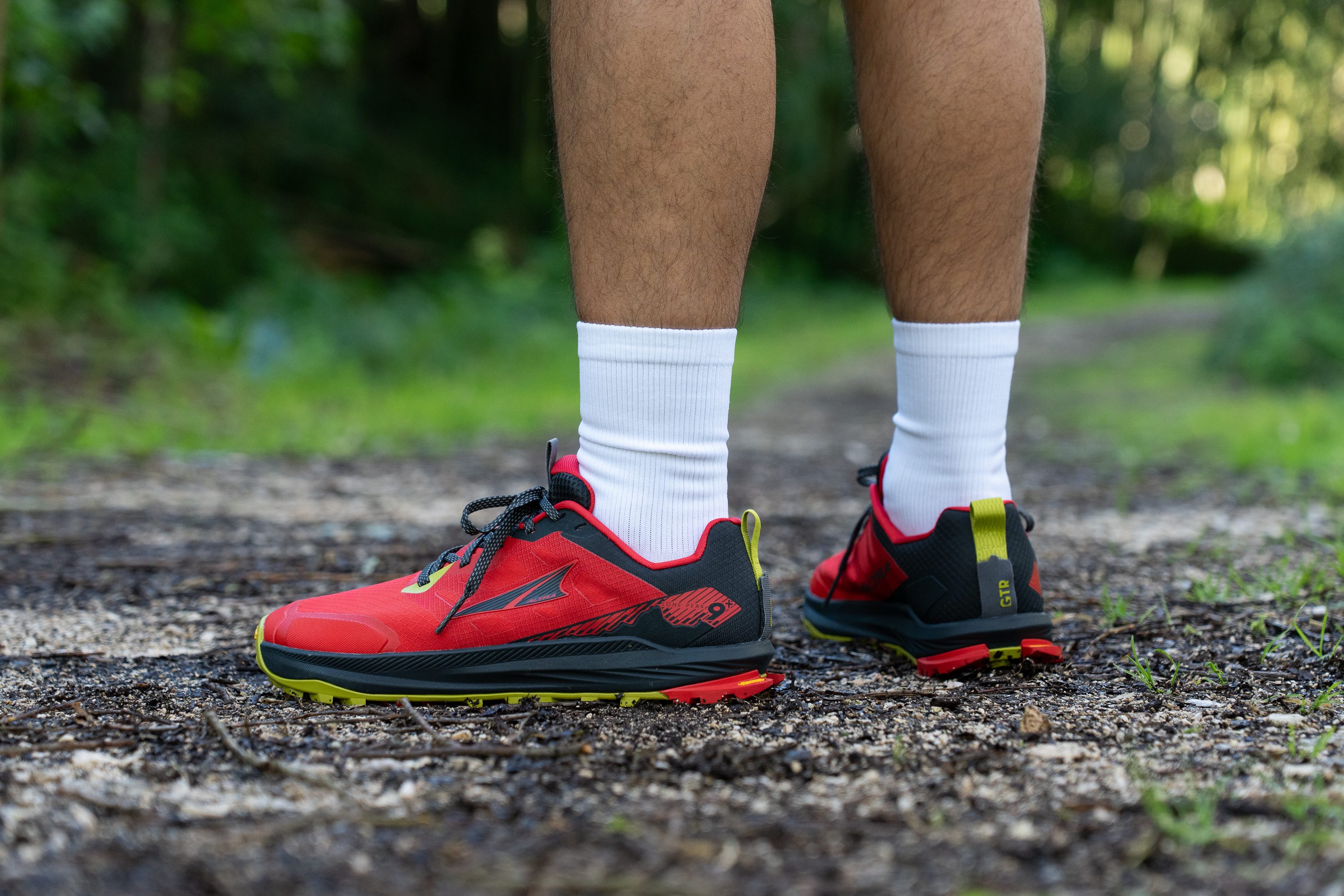
Quién NO debería comprárselas
Creemos que las Lone Peak 9 no son la mejor opción para los talonadores. Su plataforma con drop cero no se lleva bien con esa técnica de carrera, así que a ellos les recomendamos las Altra Experience Wild, que tienen un drop de 4,3 mm y cuestan más o menos lo mismo. Si te apetece probar algo fuera de Altra, entonces no te pierdas las Topo Traverse.
También pensamos que las Lone Peak 9 a lo mejor no les gustan a los corredores que están buscando proteger sus articulaciones al máximo. Su mediasuela es bajita, así que a lo mejor sientes que te falta amortiguación para cualquier cosa que no sean distancias cortas. Las Altra Olympus 6 o las Nike Zegama 2 son mejores opciones para los que están buscando una experiencia llena de amortiguación.
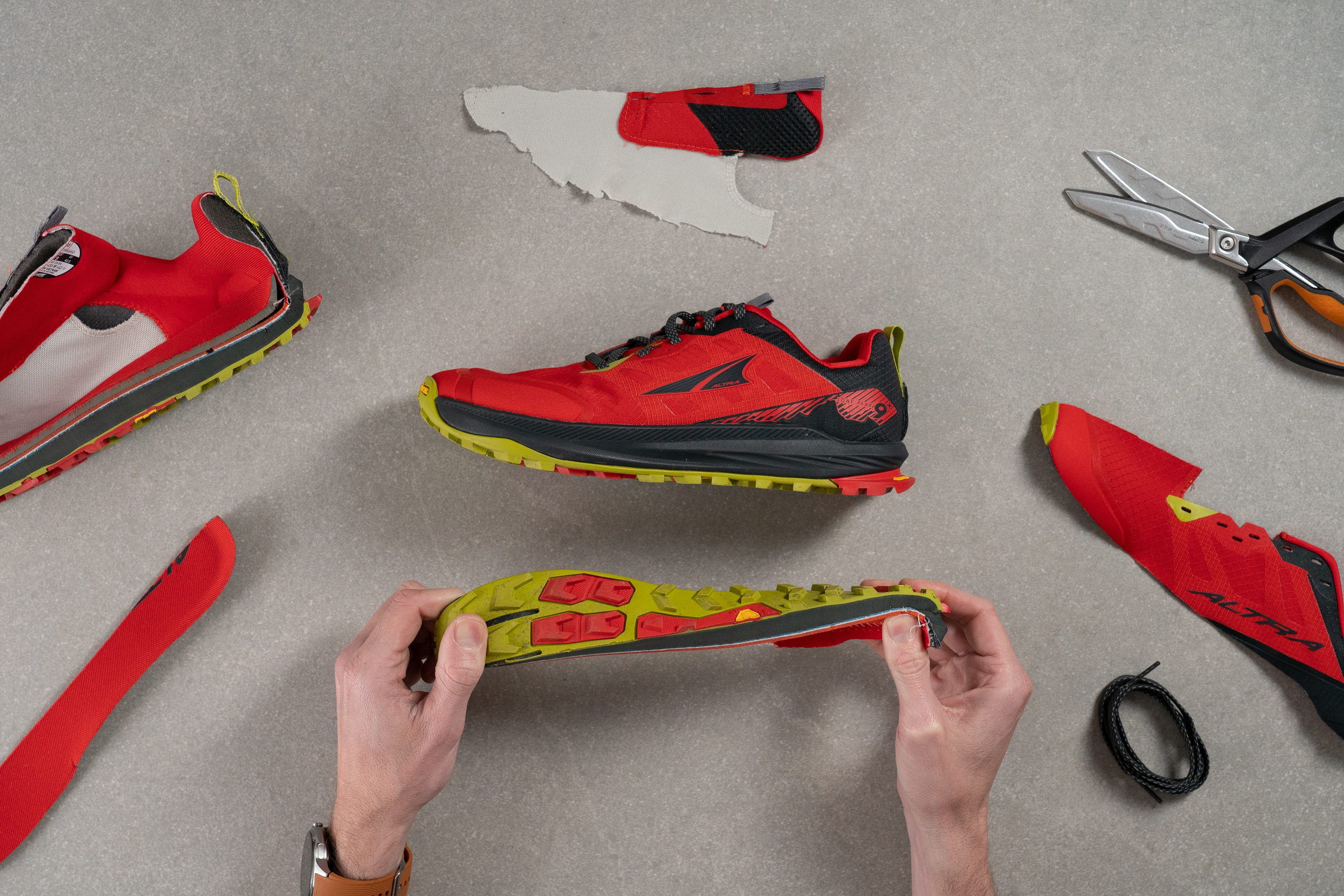
Amortiguación
Shock absorption
Descargo de responsabilidad: Hemos analizado las Altra Lone Peak 9+, la versión con la suela exterior Vibram. En esta review, nos referimos a dichas zapatillas como Altra Lone Peak 9, ya que es la versión estándar en el mercado nacional de Altra.
Después de hacerle la prueba ASTM F1976 a esta novena versión, el resultado fue de 96 SA en el talón y 82 SA en el antepié.
Por lo tanto, la absorción de impactos de las Altra Lone Peak 9 es baja. Aunque al principio no te lo creas, esto es algo positivo: muchas otras zapatillas ofrecen una sensación maximalista con todo su acolchado pero, por suerte, las Lone Peak se mantienen fieles a su contacto con el suelo y a su pisada básica.

| Lone Peak 9 | 96 SA |
| Media | 122 SA |
Energy return
Un área donde Altra podría mejorar es en los materiales de la espuma. Aunque un 57,9 % no está mal, creemos que las Lone Peak 9 serían unas zapatillas mucho mejores (y más divertidas) si tuviesen una espuma con más rebote.
| Lone Peak 9 | 57.9% |
| Media | 55.6% |
Altura de la suela en la zona del talón
Las Lone Peak 9 se mantiene fieles a sus raíces con una mediasuela de perfil bajo que se siente ágil y estable, algo que cada vez es menos frecuente en el mercado actual de las zapatillas de running.
Cuando la medimos, nuestro calibre marcó 23,3 mm, así que está un poco por debajo de la medida oficial que indica la marca: 25 mm. Pero bueno, sinceramente, para nosotros este resultado no es un inconveniente, ¡sino una ventaja!
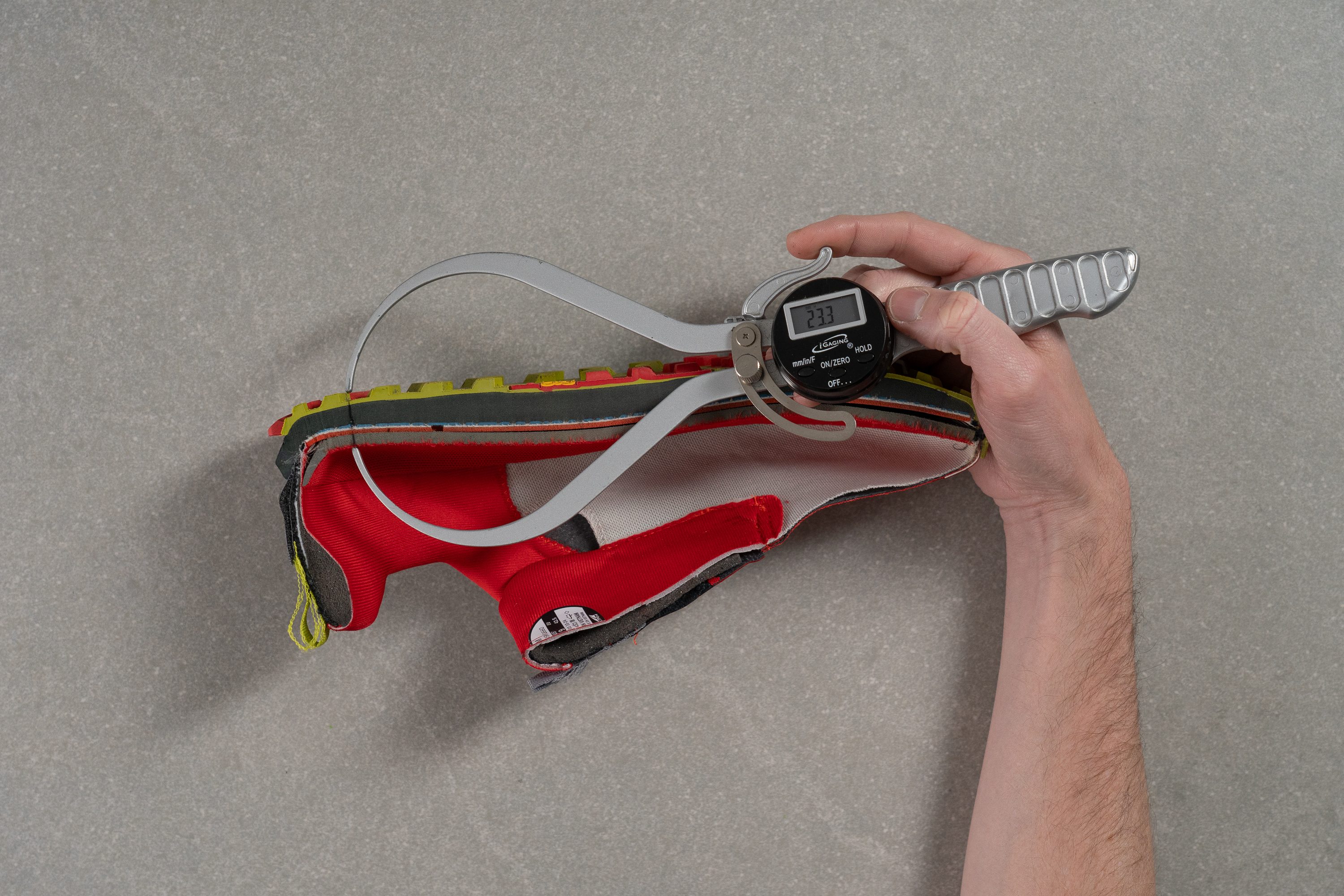
| Lone Peak 9 | 23.3 mm |
| Media | 32.6 mm |
Altura de la suela en el antepié
Cuando medimos el antepié, nuestro calibre marcó exactamente la misma altura que en el talón. Como lo comprobamos todo hasta 3 veces, volvimos a medirlo, y nuestro calibre volvió a marcar 23,3 mm. Así que la sensación ágil y minimalista no cambia, por lo que este modelo tiene la espuma justa para las aventuras más largas, pero sin pasarse.
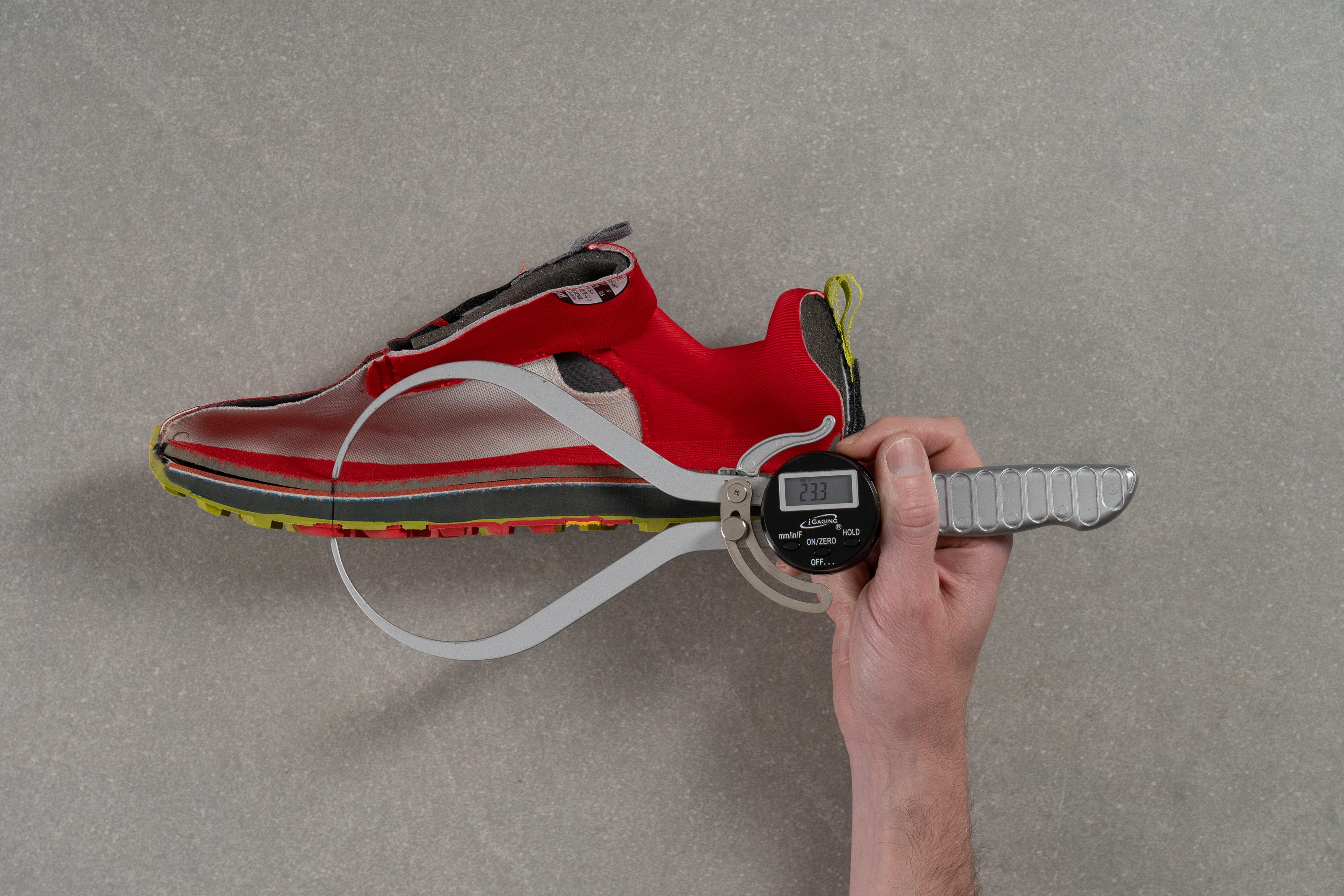
| Lone Peak 9 | 23.3 mm |
| Media | 25.1 mm |
Drop
No hace falta ser matemático para saber que 23,3 menos 23,3 es 0, así que el drop de este modelo es 0,0 mm. Eso es justo lo que Altra promete con las Lone Peak 9, y también es exactamente lo que descubrimos en el laboratorio.
Como es un modelo con drop 0, se adapta mejor a los corredores de mediopié y de metatarsos. Los que tengan problemas de tensión en la pantorrilla o sensibilidad en el tendón de Aquiles deberían echarle un ojo a un par con un drop alto o moderado.
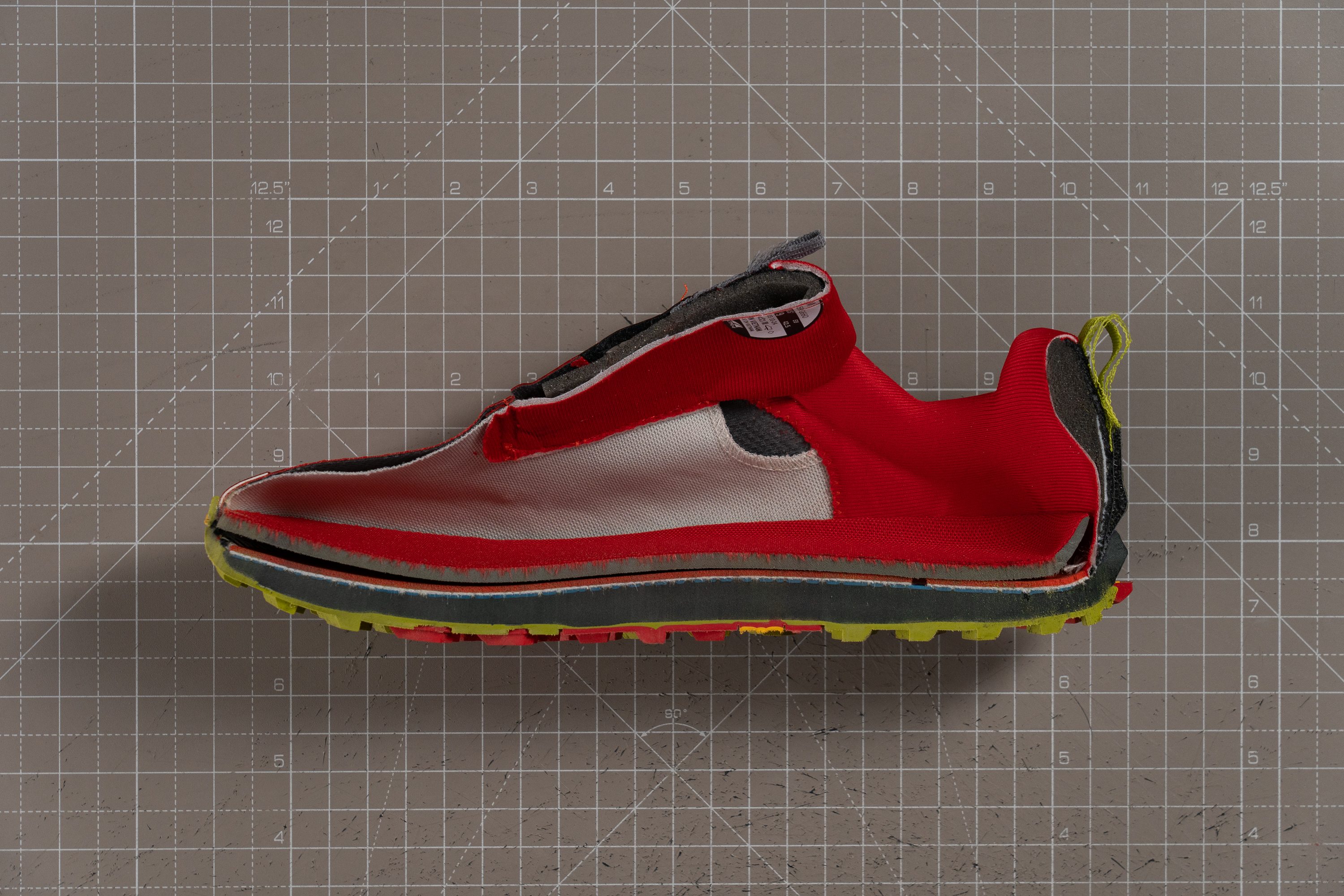
| Lone Peak 9 | 0.0 mm |
| Media | 7.6 mm |
Suavidad de la mediasuela
La mediasuela utiliza Altra EGO, que es su espuma EVA básica, por lo que todavía no tenemos EGO Max o un compuesto más nuevo. Dicho esto, esperarse una mejora a este precio puede ser demasiado optimista, pero estaremos atentos a futuros lanzamientos.
Seguir con EGO significa que la sensación es más bien rígida. Nuestro durómetro marcó 23,6 HA y, según nuestras pruebas, el rebote es moderado pero la protección es duradera, sobre todo si tenemos en cuenta que estamos ante unas zapatillas de trail sin placa anti rocas y con una suela bajita.
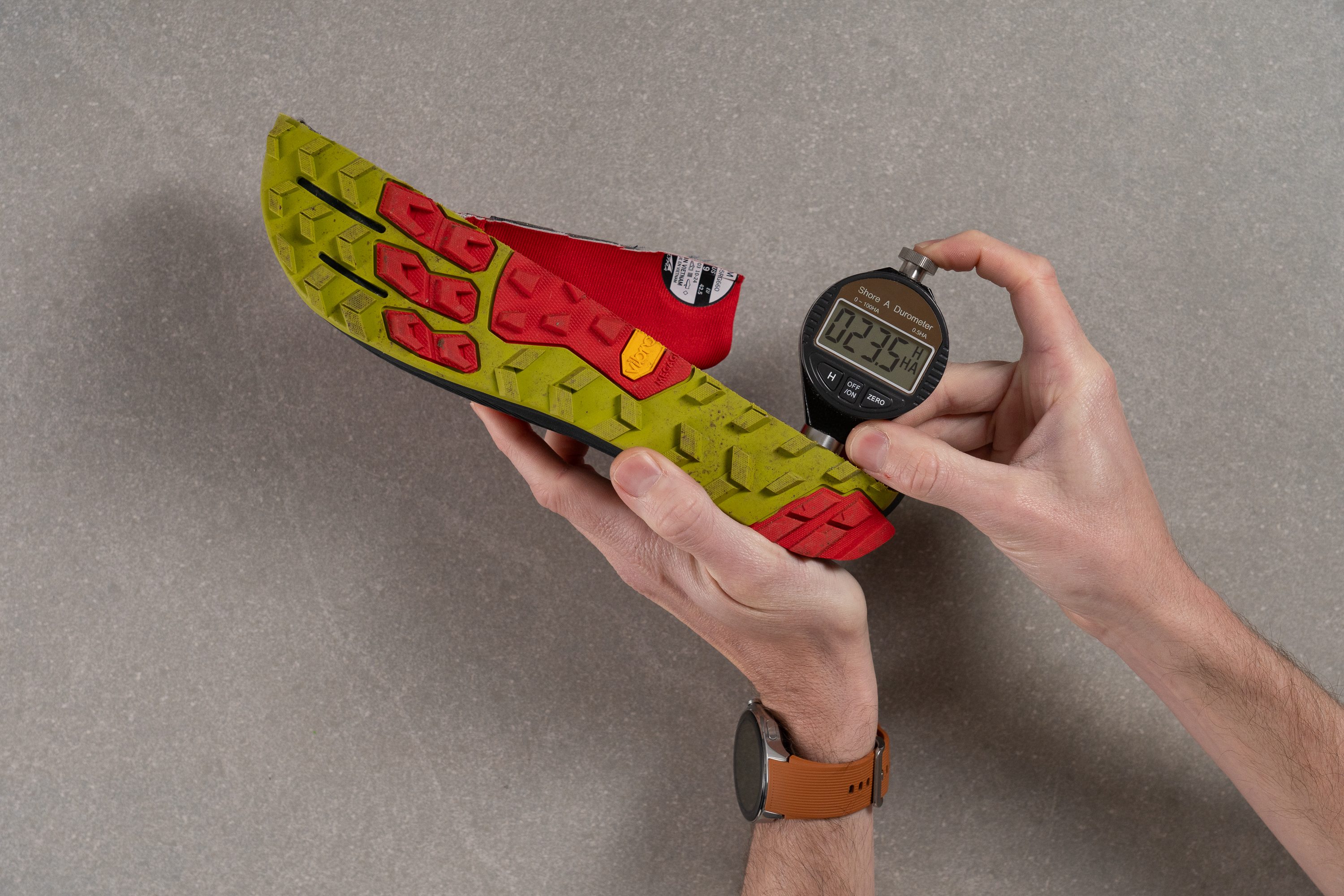
| Lone Peak 9 | 23.6 HA |
| Media | 21.9 HA |
Rocker
Una de nuestras mayores preocupaciones con las Lone Peak 9 era que a Altra se le diese por ponerles un rocker agresivo. Por suerte, ¡la marca decidió no hacerlo!
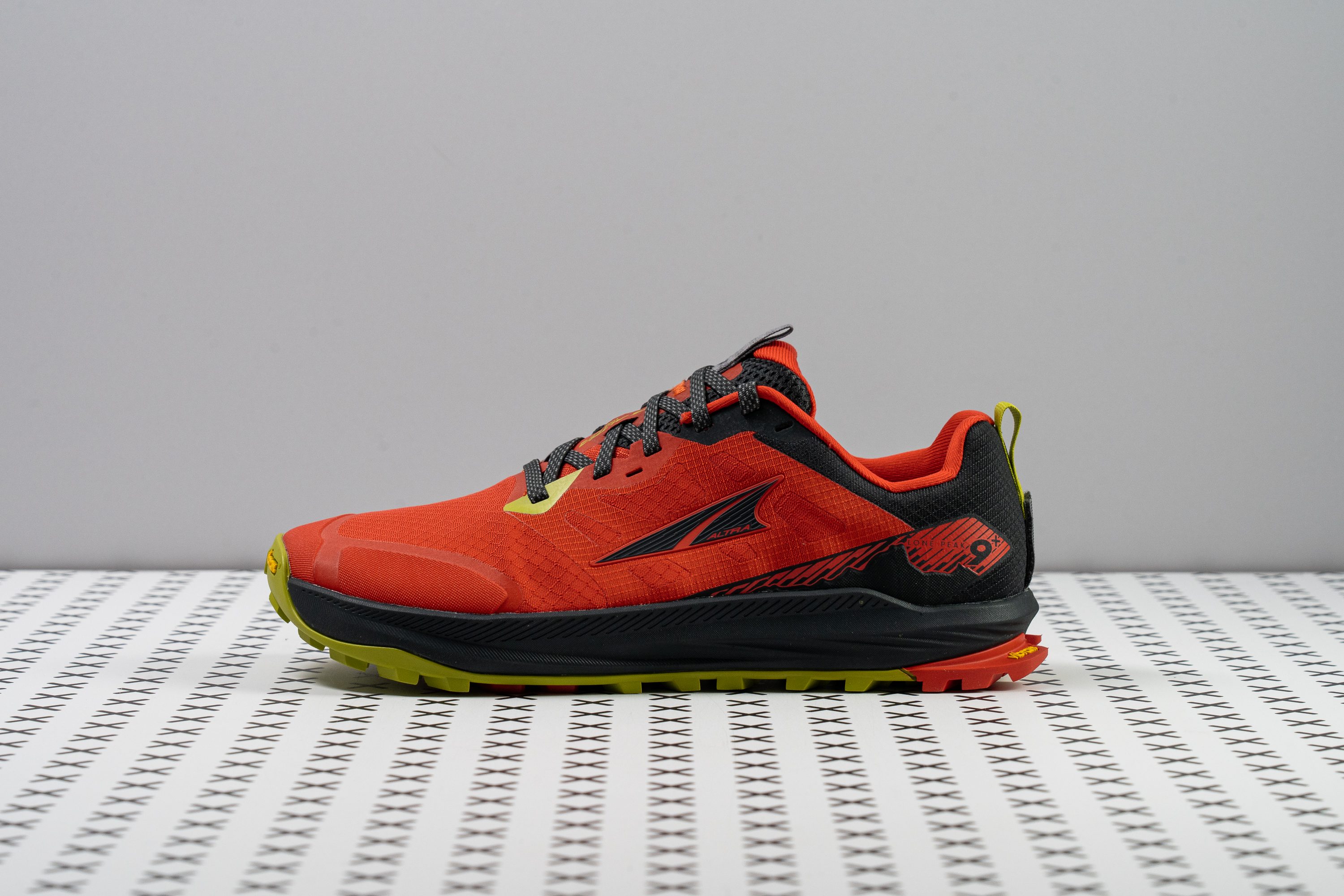
Son muy buenas noticias, ya que este modelo de trail se sigue sintiendo natural en los pies. En nuestra opinión, esto hace que no pierdan su puesto como zapatillas de trail sin rocker que hace que la experiencia al correr sea más natural.
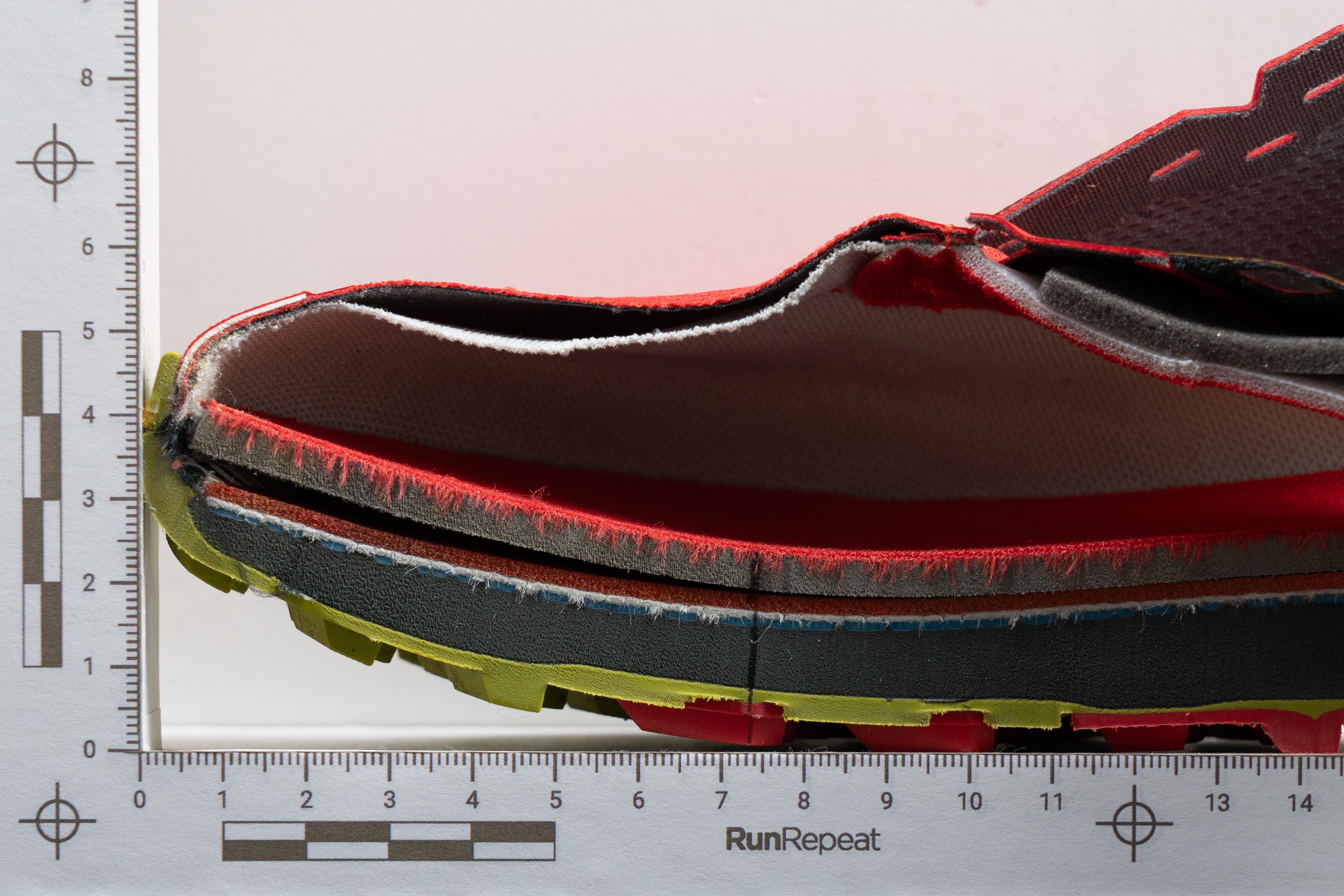
Tallaje y ajuste
Talla
Las Altra Lone Peak 9 tallan bien (63 votos).
Anchura / Ajuste
¿Y cómo es el ajuste? Pues esa es la gran pregunta que se hacen muchos corredores al comprar zapatillas de Altra, y más los que se esperan que una parte delantera ancha gracias al diseño Original Footshape de la marca. Para comprobarlo, hicimos un molde de gel y nos pusimos a trabajar en lo que más nos gusta: medir las zapatillas de running.
Empezamos por su anchura, y nos dio 98,5 mm. Vamos, que son más bien anchas, pero no queremos decir nada antes de medir las 2 siguientes zonas.
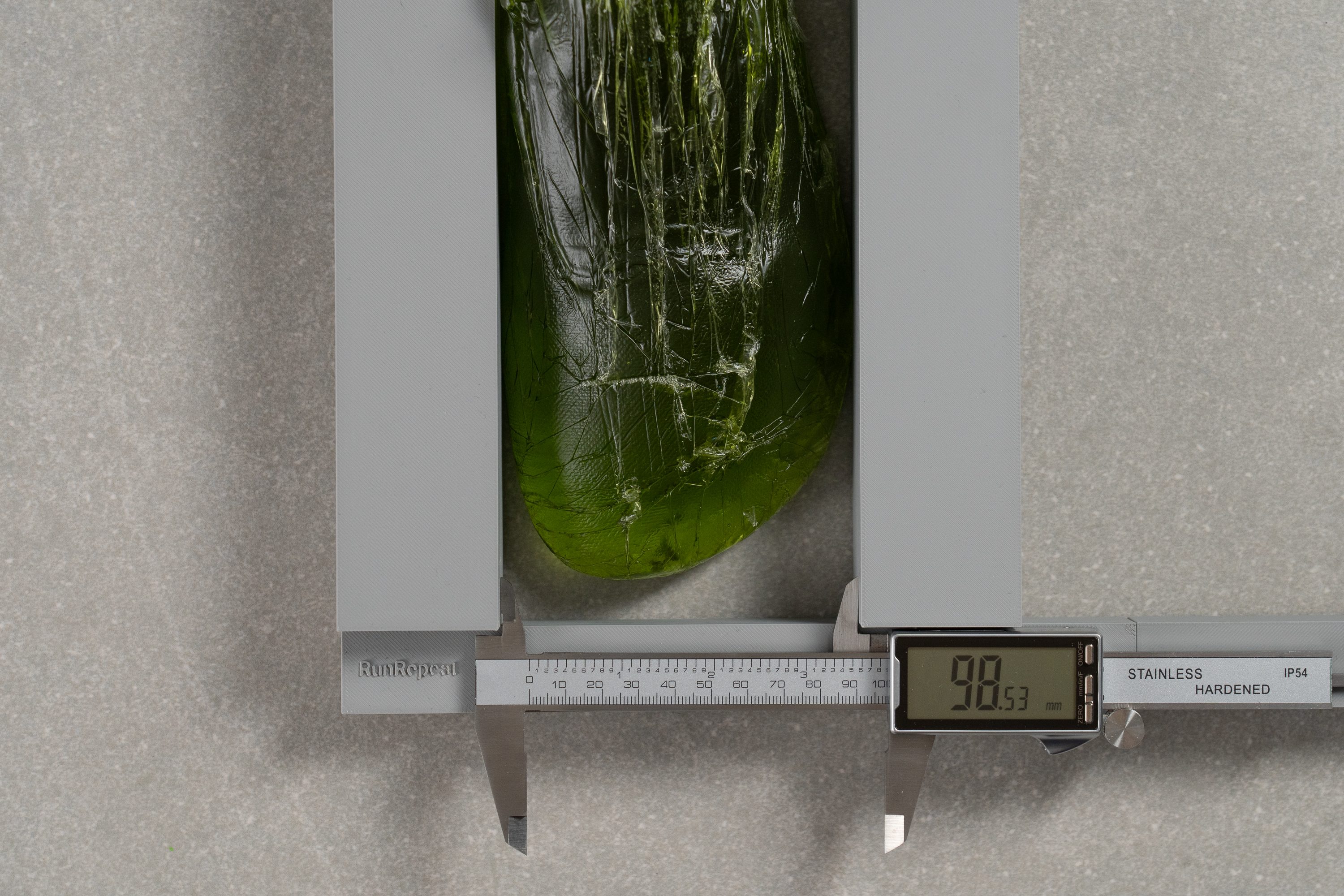
| Lone Peak 9 | 98.5 mm |
| Media | 95.6 mm |
Anchura de la parte delantera
Las personas que quieran tener espacio de sobra para poder mover los dedos estarán encantadas con las Lone Peak 9. Mantienen el ajuste espacioso de sus predecesoras, ¡e incluso se sienten un poquito más anchas!
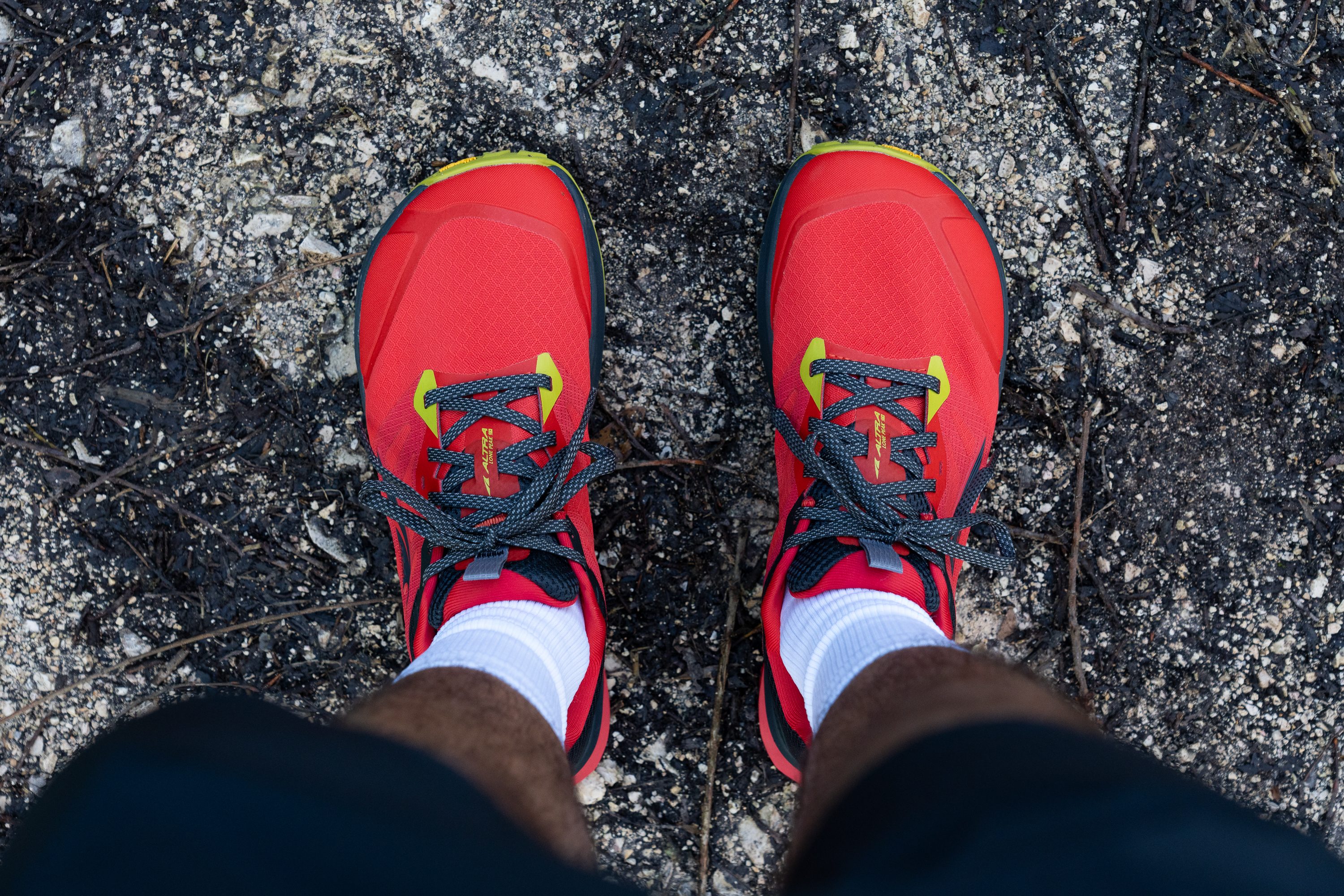
Cuando medimos la zona del dedo gordo, nos dio 85,3 mm, que es una barbaridad. La forma del molde también confirma que este modelo no se estrecha hacia la punta, y para tener incluso más opciones, Altra ofrece estas zapatillas en versión estándar y ancha.
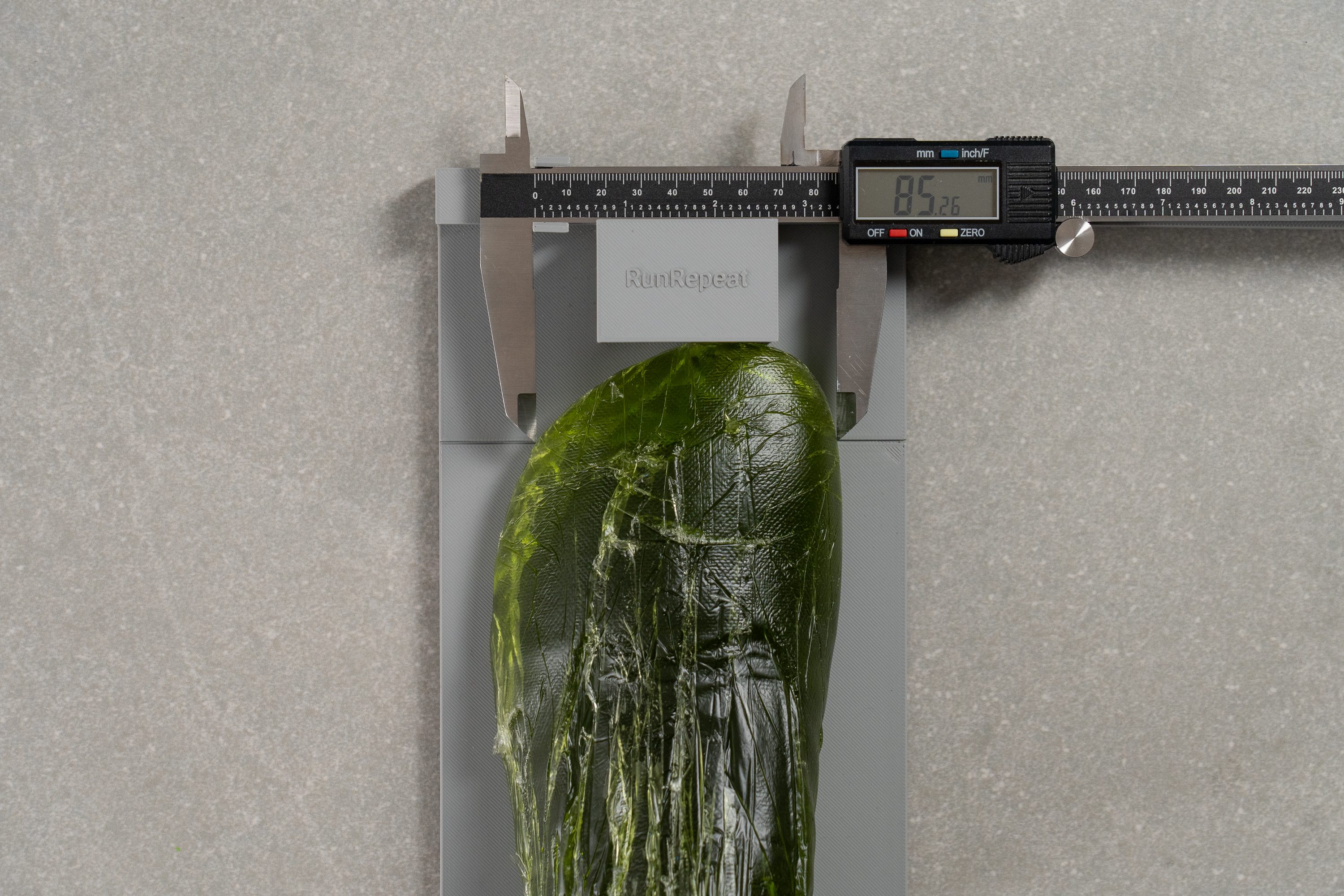
| Lone Peak 9 | 85.3 mm |
| Media | 74.6 mm |
Altura de la parte delantera
Las zapatillas sí que se sienten un poco más limitadas en cuanto a espacio vertical, aunque no es nada de lo que preocuparse.
Después de disfrutar de tanto espacio horizontal, los 26,8 mm de altura media de la parte delantera a lo mejor se nos quedaron un poquito cortos.
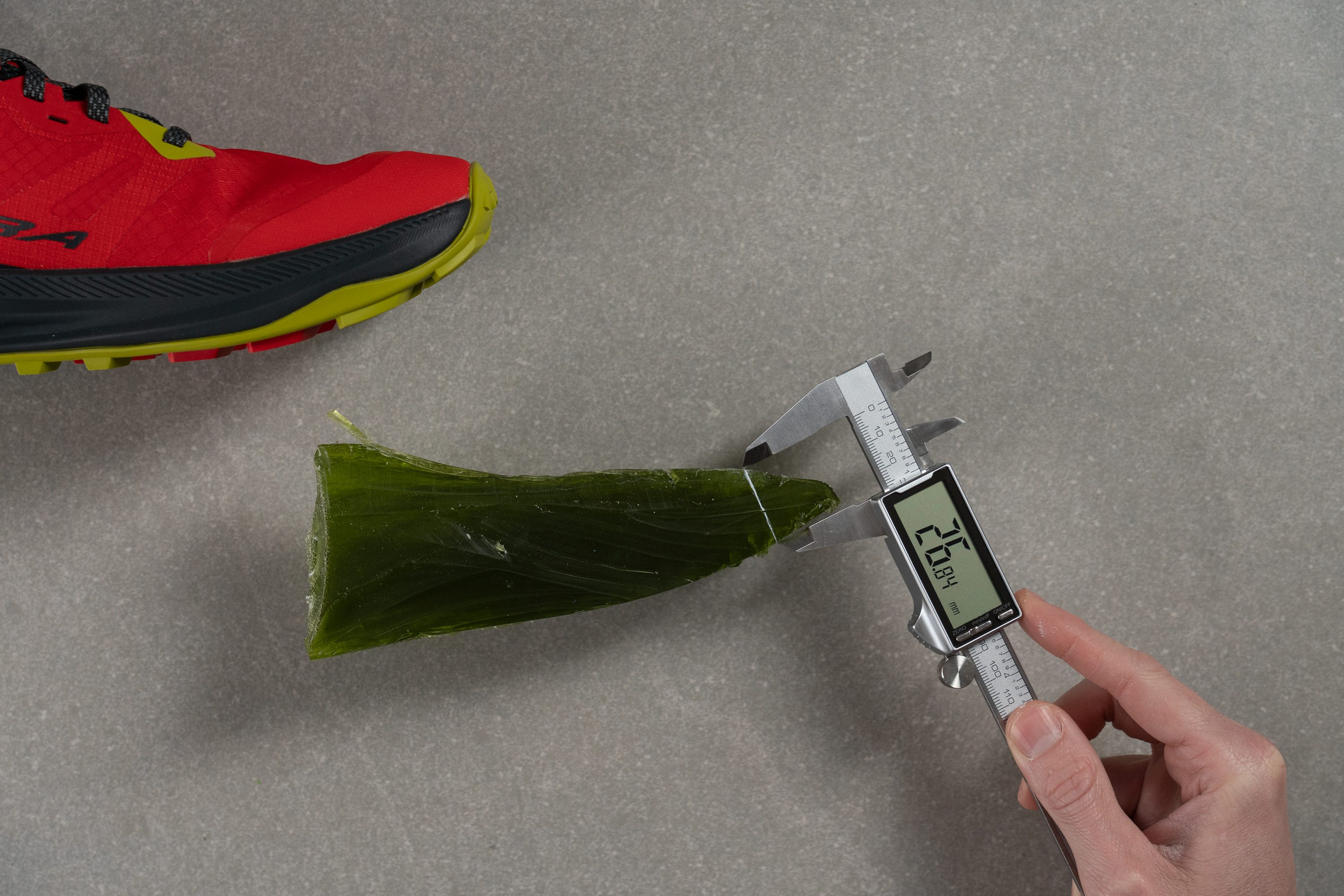
| Lone Peak 9 | 26.8 mm |
| Media | 27.0 mm |
Tracción / Agarre
Tracción en el antepié
Analizamos la versión Vibram de las Lone Peak 9y ,como era de esperar, la tracción se adaptó bien al terreno gracias al caucho Megagrip. De todos modos, la verdad es que nos esperábamos un agarre mejor sobre mojado, pero el 0,37 que se llevaron sigue siendo decente para salir de aventuras cuando llueve.
| Lone Peak 9 | |
| Media | 0.60 |
Profundidad del dibujo de la suela
Las Altra Lone Peak 9+ tienen unos tacos agresivos de 3,8 mm que proporcionan un agarre seguro en varios terrenos distintos. Su diseño en forma de flecha garantiza una buena tracción en las subidas y un frenado controlado en los descensos, y creemos que es más adecuada para los senderos fáciles y moderados.
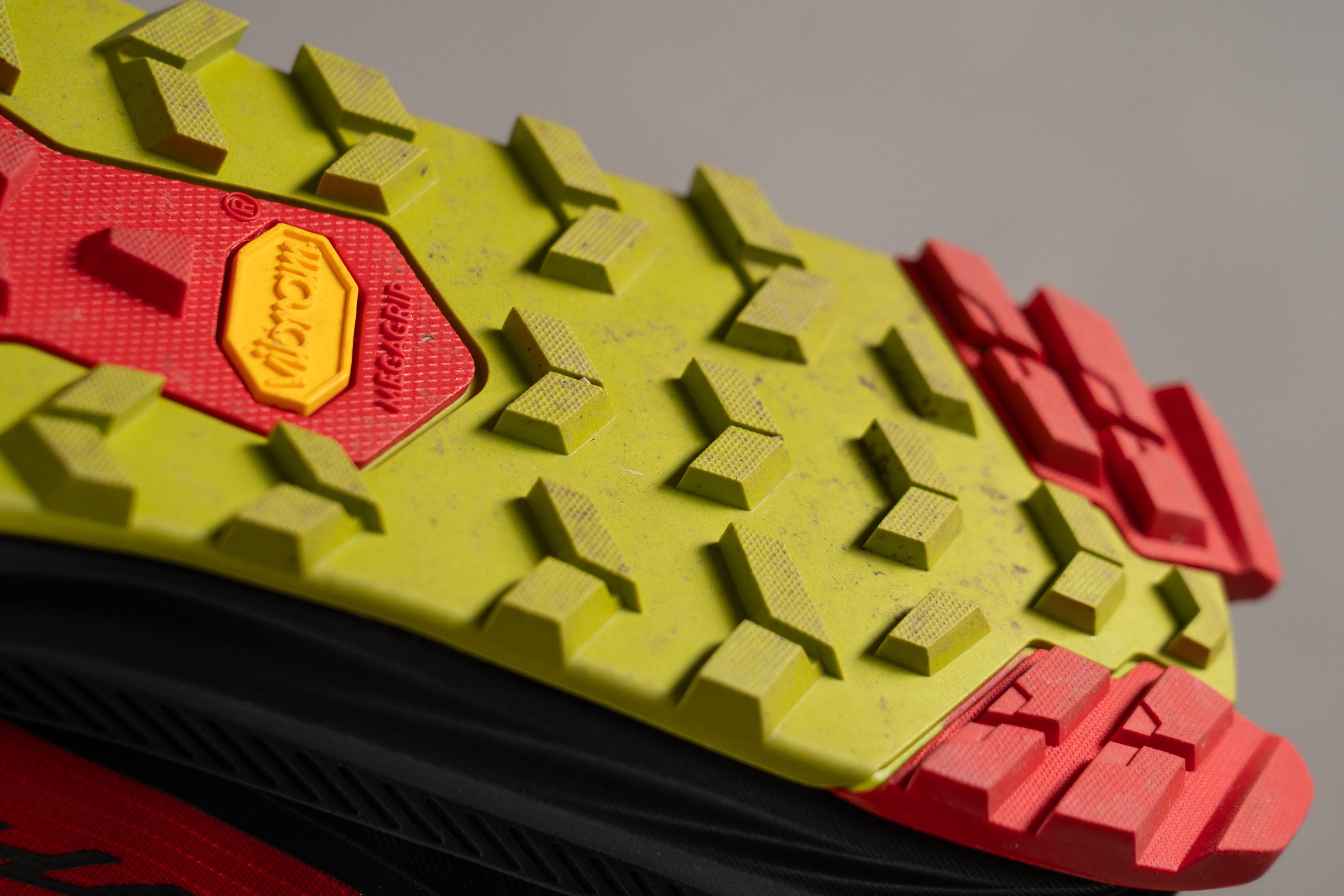
Descubrimos que el patrón multidireccional funciona muy bien en grava suelta y tierra seca, e incluso aguanta cuando se pasa a raíces mojadas o tramos embarrados.
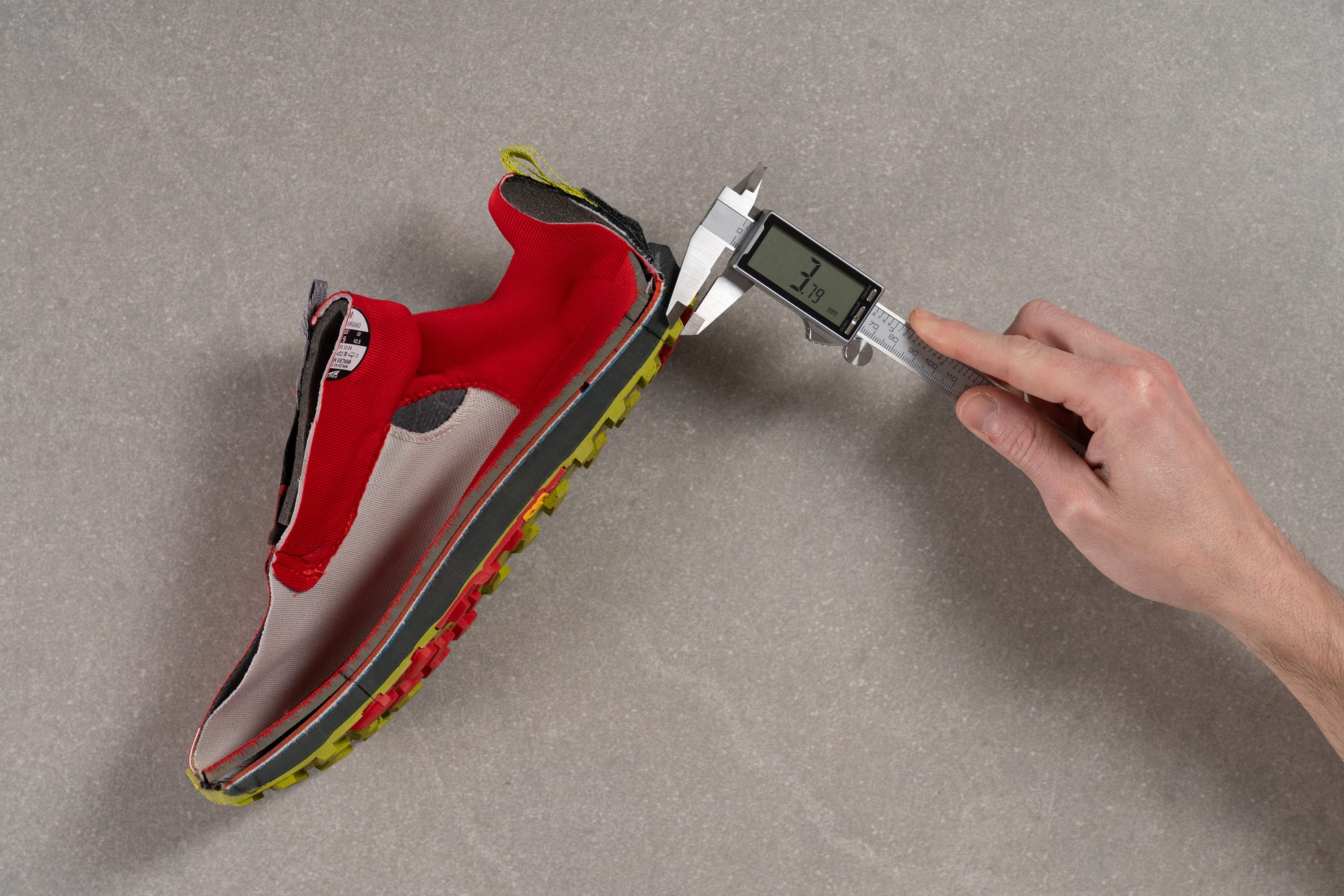
| Lone Peak 9 | 3.8 mm |
| Media | 3.5 mm |
Diseño de la suela exterior
Las Lone Peak 9 tienen una suela Vibram Megagrip de longitud completa, hecha de caucho bicolor en verde lima y rojo. Como de costumbre, su diseño refleja la forma natural del pie humano, con zonas segmentadas que siguen la anatomía de los dedos y de los metatarsianos.
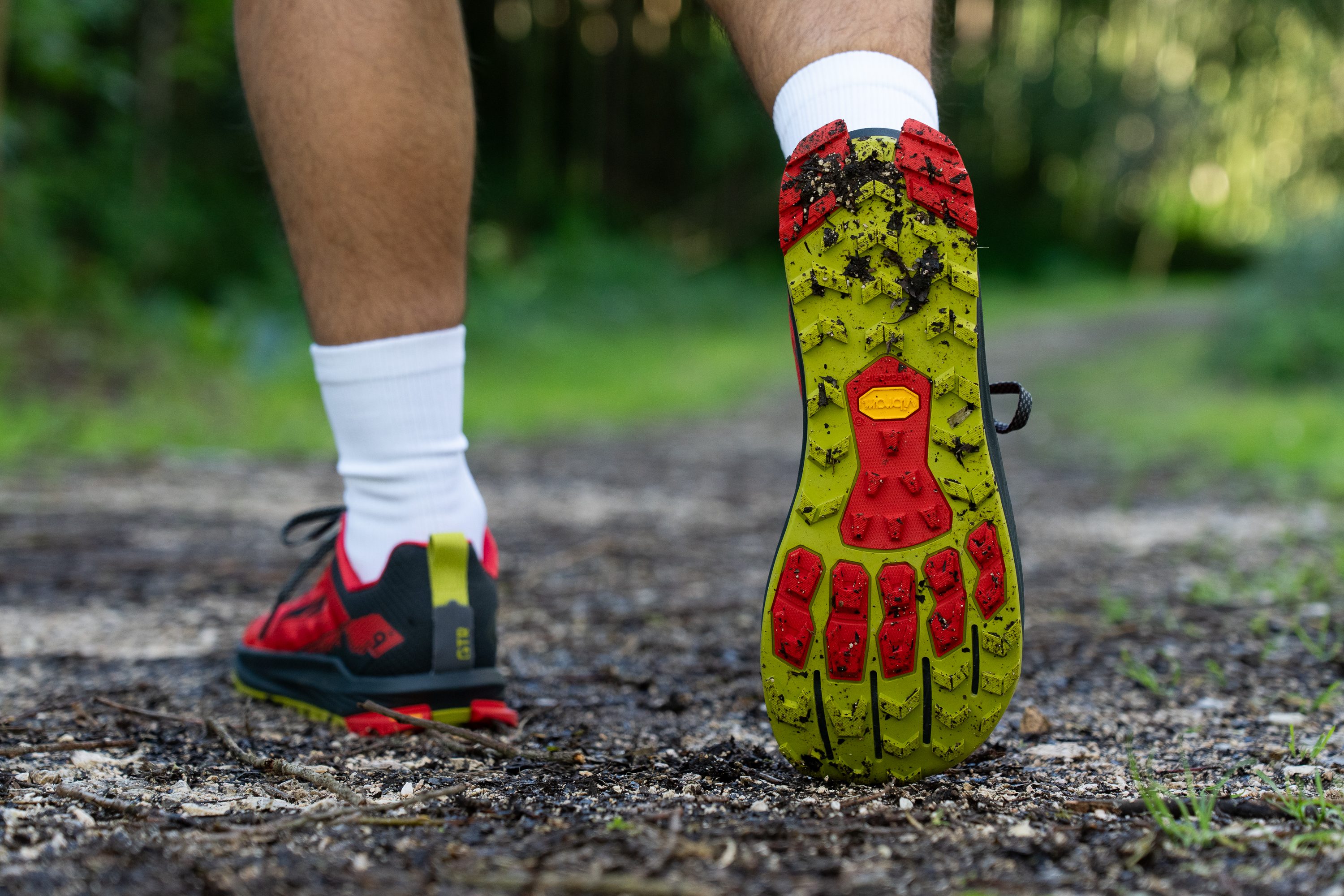
Flexibilidad / Rigidez
Las Lone Peak siempre han sido unas zapatillas de trail muy flexibles, pero eso está cambiando con cada actualización. Volvimos a hacerles nuestra prueba de flexión, pero esta vez a 30 grados, y necesitaron 12,0 N de fuerza para doblarse. Aunque no está mal, la verdad es que nos esperábamos más flexibilidad de unas Lone Peak. A modo de comparación, las Olympus 6 necesitaron 17,5 N en esta misma prueba.
Personalmente, nosotros pensamos que el alma de las Lone Peak está en su flexibilidad, que es algo que parece que las últimas actualizaciones están perdiendo.
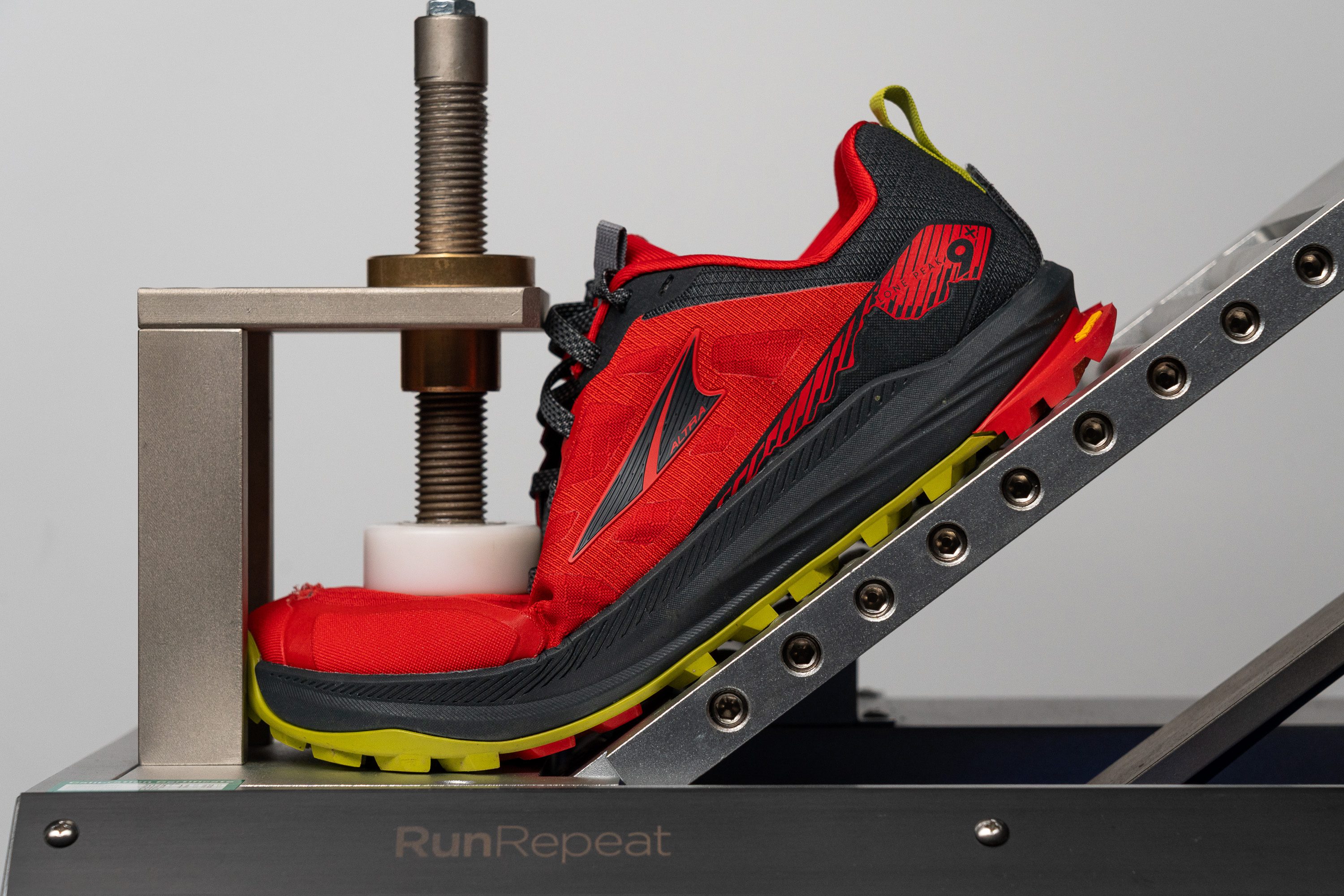
| Lone Peak 9 | 12.0N |
| Media | 14.6N |
Peso
Traemos malas noticias otra vez, ya que las Lone Peak 9 pesan 309 g. Este resultado nos pareció un desastre teniendo en cuenta que estamos hablando de unas zapatillas de trail con una suela baja que prioriza la conexión con el suelo.
También es un aumento considerable en comparación con sus predecesoras, que pesaban 288 g. De hecho, hasta las sentimos un poco pesadas en los pies, pero dentro de un rango tolerable. Venga, Altra, ¡sabemos que puedes reducir el peso en su versión 10!
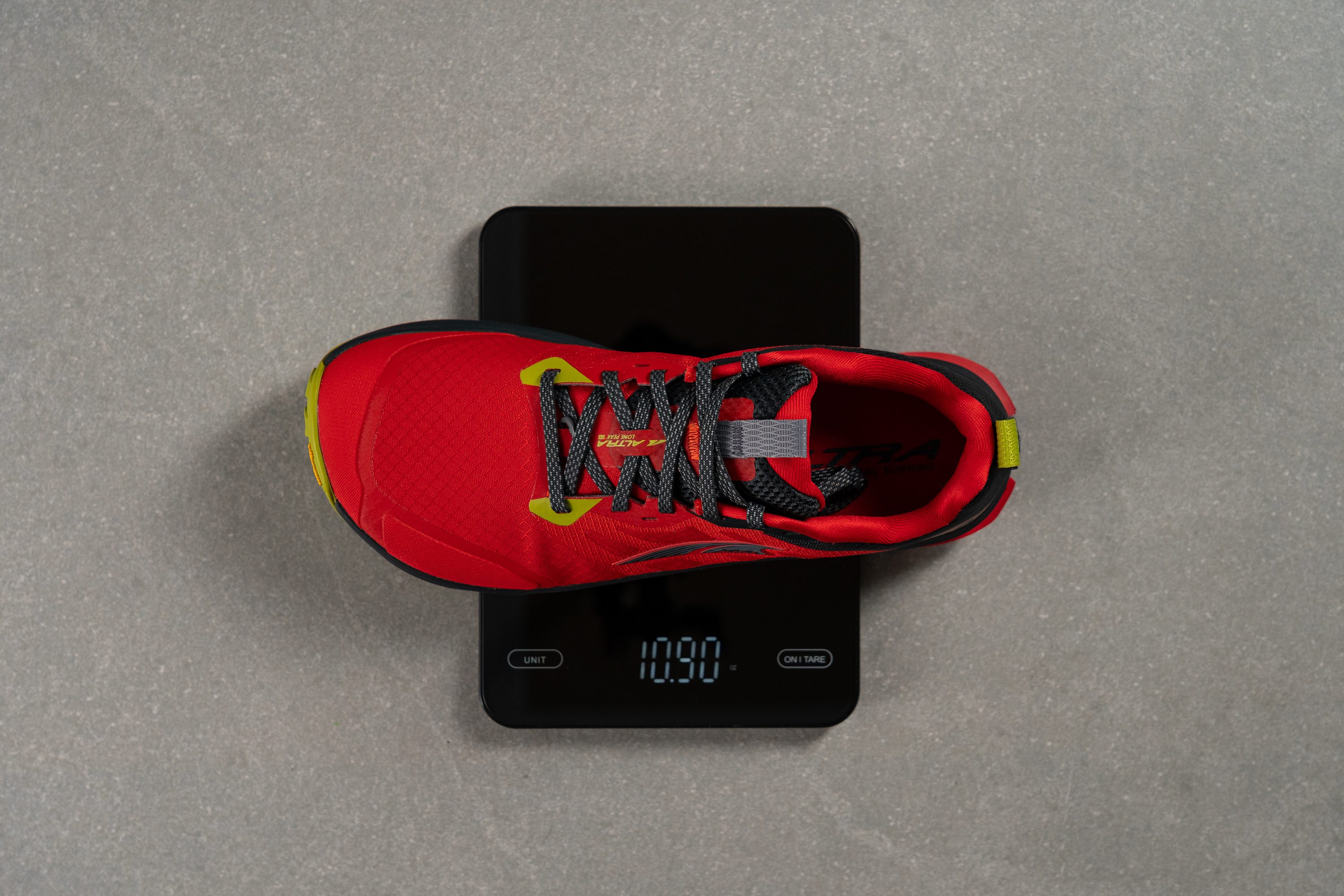
| Lone Peak 9 | 10.9 oz (309g) |
| Media | 10.2 oz (289g) |
Transpirabilidad
A los que estén pensando en ponerse las Altra Lone Peak 9 para sus aventuras cuando hace calor, queremos decirles que la transpirabilidad de esta versión... es bastante limitada.
Para comprobarlo, conectamos nuestra máquina de humo a una pieza impresa en 3D y la metemos dentro de la zona de los dedos. El humo no consiguió salir, así que no pudimos darles más que un 2/5 en esta prueba a las LP9. En nuestra opinión, son adecuadas para los días más fresquitos, pero no nos parecen la mejor opción para cuando hace calor.
Cuando pusimos un cacho del upper frente a nuestra luz LED, vimos cómo el material no dejaba que brillase, confirmando nuestras conclusiones anteriores.
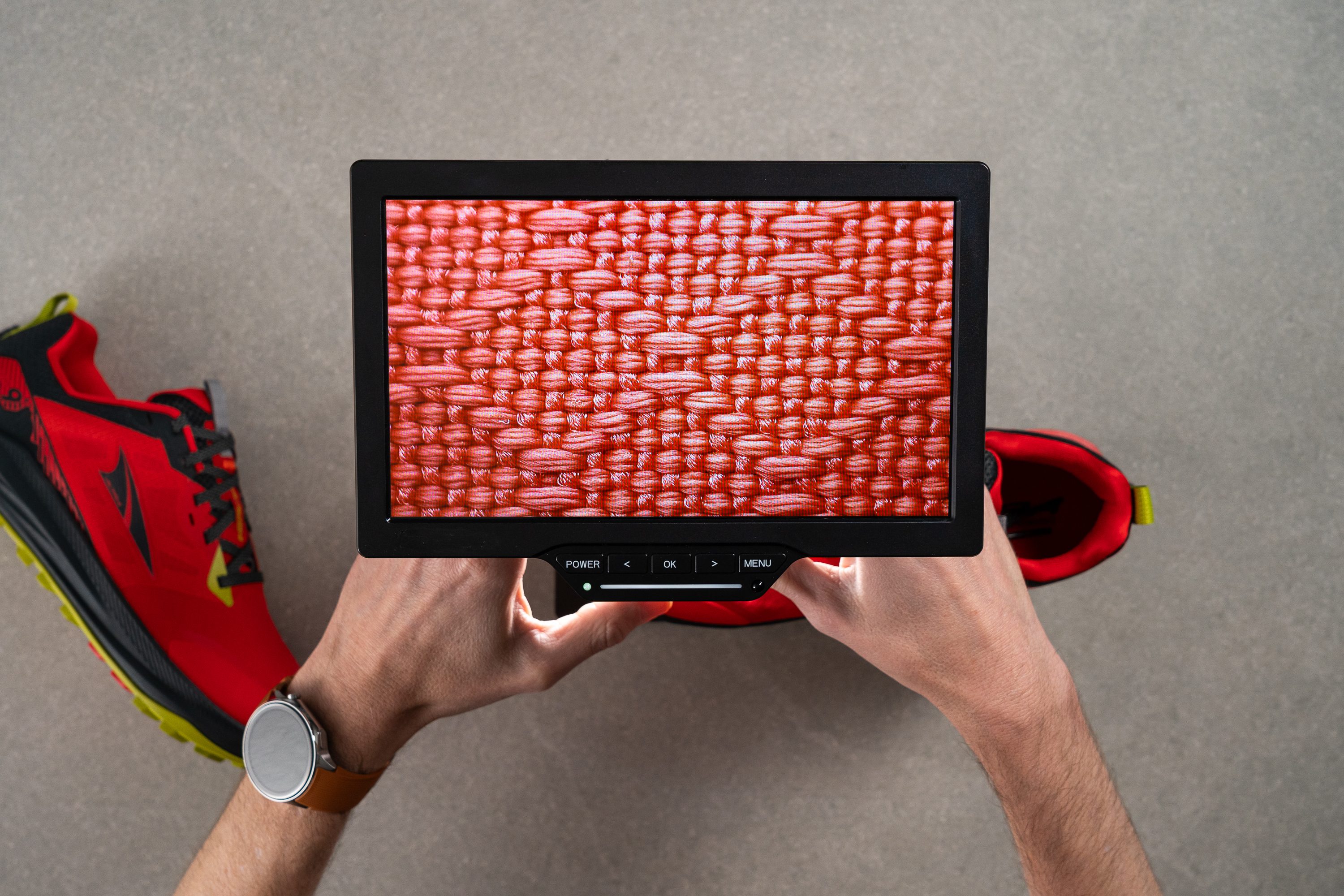
Como queríamos saber más sobre este material, lo pusimos bajo nuestro microscopio. Los resultados fueron claros: ¡el aire no tiene ni medio hueco por el que escaparse!
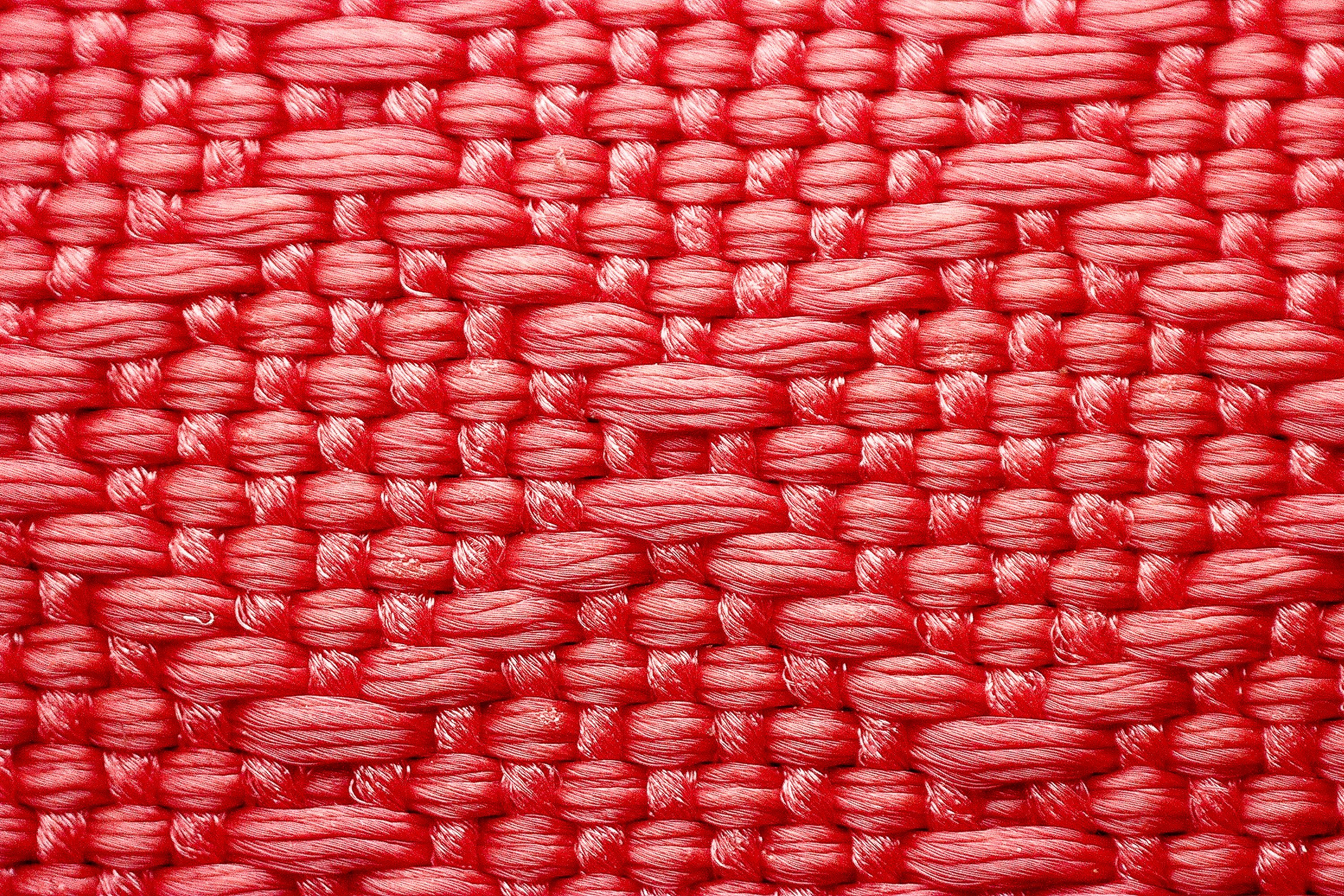
El diseño resistente y cero elástico del upper nos dice que este modelo está diseñado apra darle caña. Además, que no tenga agujeritos para el flujo de aire podría mejorar su durabilidad, que es algo que analizaremos más adelante.
| Lone Peak 9 | 2 |
| Media | 3.2 |
Estabilidad
Prueba de estabilidad lateral
Hemos comprobado que este modelo se siente estable en los pies, lo que aumentó nuestra confianza. Pero bueno, no te vamos a mentir, teniendo en cuenta lo baja que es su suela, es lo que nos esperábamos.
Las paredes laterales de la mediasuela de estas zapatillas se parecen mucho a las de la versión anterior, ya que ayudan a guiar a los corredores de mediopié y ofrecen un extra de sujeción. Aunque a algunas personas les puedan parecer un poco intrusivas, creemos que es un riesgo que merece totalmente la pena.
Rigidez torsional
Aunque las Lone Peak 9 no son más altas que las versiones anteriores, sí que nos parecieron un poco más rígidas. El año pasado se llevaron un 2/5 en esta prueba, y esta vez han alcanzado un 3/5, que es algo que no les va a hacer mucha gracia a los que están buscando una pisada natural.
| Lone Peak 9 | 3 |
| Media | 3.6 |
Rigidez del contrafuerte del talón
Por otro lado, el contrafuerte del talón sigue siendo muy flexible y cómodo, envolviendo el pie con facilidad. También mantienen el cuello del tobillo bajo, que es algo que tampoco le gusta a todo el mundo. Estas Altra se han vuelto a llevar un 2/5 en esta prueba, que es algo con lo que nosotros, personalmente, estamos contentos.
| Lone Peak 9 | 2 |
| Media | 3 |
Anchura de la mediasuela - antepié
Las LP8 tenían una anchura de solo 108,3 mm en el antepié, y esta vez podemos disfrutar de un poquito más. Esa es la razón por la que nos parecieron un poquito más estables, ya que ahora alcanzan unos 112,2 mm y se acercan más a la media de las zapatillas de trail.
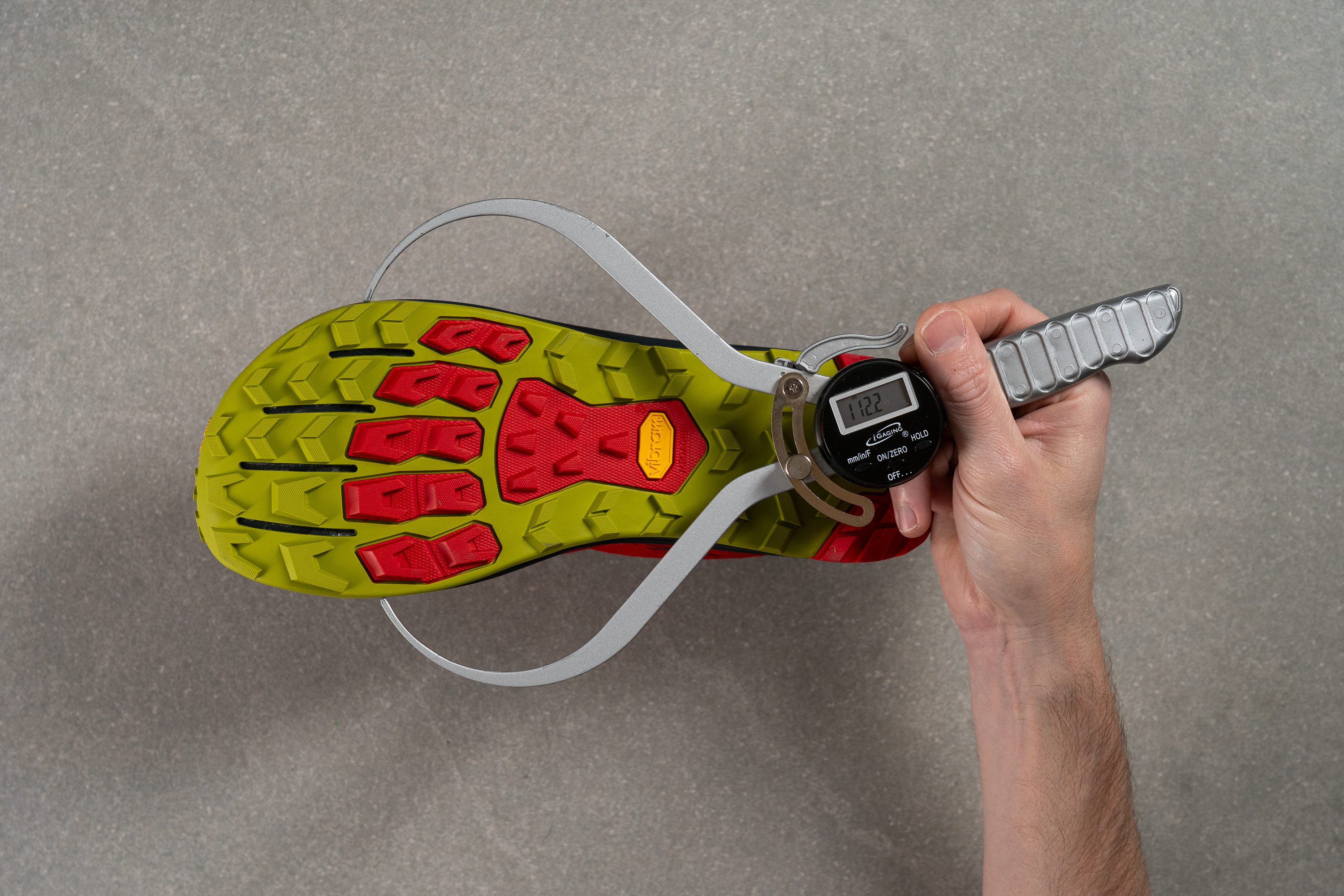
| Lone Peak 9 | 112.2 mm |
| Media | 112.8 mm |
Anchura de la mediasuela - talón
El talón sigue siendo muy estrecho, de 82,1 mm, y estamos muy contentos con eso.
En unas zapatillas con un drop de 0,0 mm diseñadas para ser ágiles, un talón ancho y tosco solo les quitará velocidad, y ese no es su objetivo.
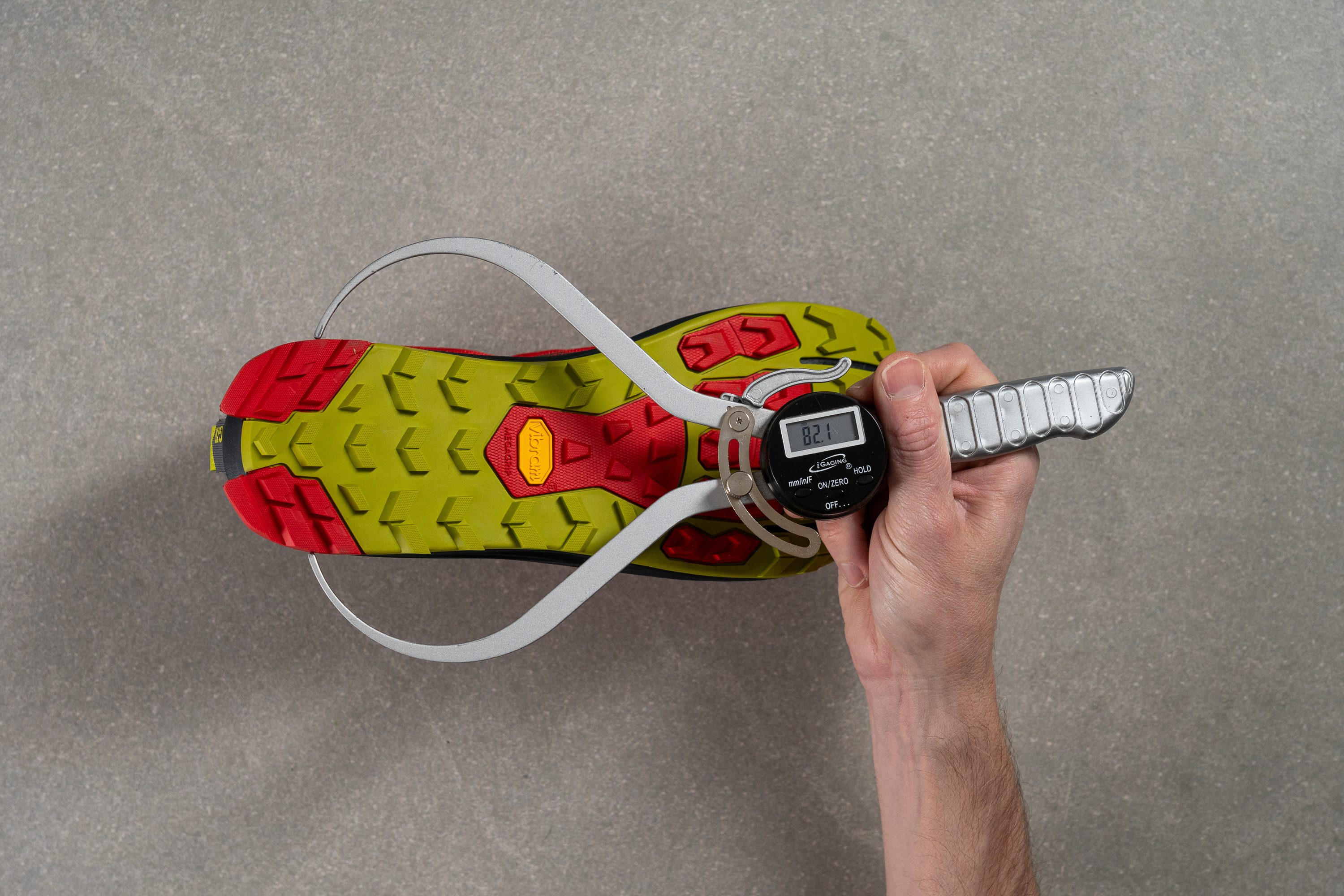
| Lone Peak 9 | 82.1 mm |
| Media | 89.8 mm |
Durabilidad
Durabilidad de la parte delantera
Nuestra hipótesis es que la falta de agujeros para el flujo de aire de estas zapatillas las hace más robustas, así que cogimos nuestro Dremel para comprobarlo.
Cuando terminamos la prueba, le dimos una puntuación intermedia: un 3/5. A ver, no podemos decir que estemos totalmente decepcionados, pero tampoco es lo que nos esperábamos de un upper tan reforzado y con una transpirabilidad casi inexistente.
| Lone Peak 9 | 3 |
| Media | 3.1 |
Durabilidad del acolchado del talón
Estas zapatillas se llevaron un moderado 3/5 en nuestra prueba de durabilidad del acolchado del talón. Basándonos en nuestros hallazgos, la verdad es que no está tan mal, así que no es probable que las Lone Peak 9 muestren signos de desgaste prematuros.
| Lone Peak 9 | 3 |
| Media | 3 |
Durabilidad de la suela
Una vez más, nos quedamos contentos con los resultados, ya que Vibram consigue combinar tracción y durabilidad en el trail. Cuando nuestro Dremel se cansó de dar vueltas, vimos que los daños eran de solo 0,8 mm.
| Lone Peak 9 | 0.8 mm |
| Media | 0.9 mm |
Grosor de la suela
La suela exterior tiene un grosor moderado de 2,0 mm; lo que nos parece lógico, ya que al no haber una placa anti rocas, agradecemos ese extra de protección bajo los pies. Eso sí, al no haber cortes grandes en la suela, la flexibilidad se ve afectada negativamente.
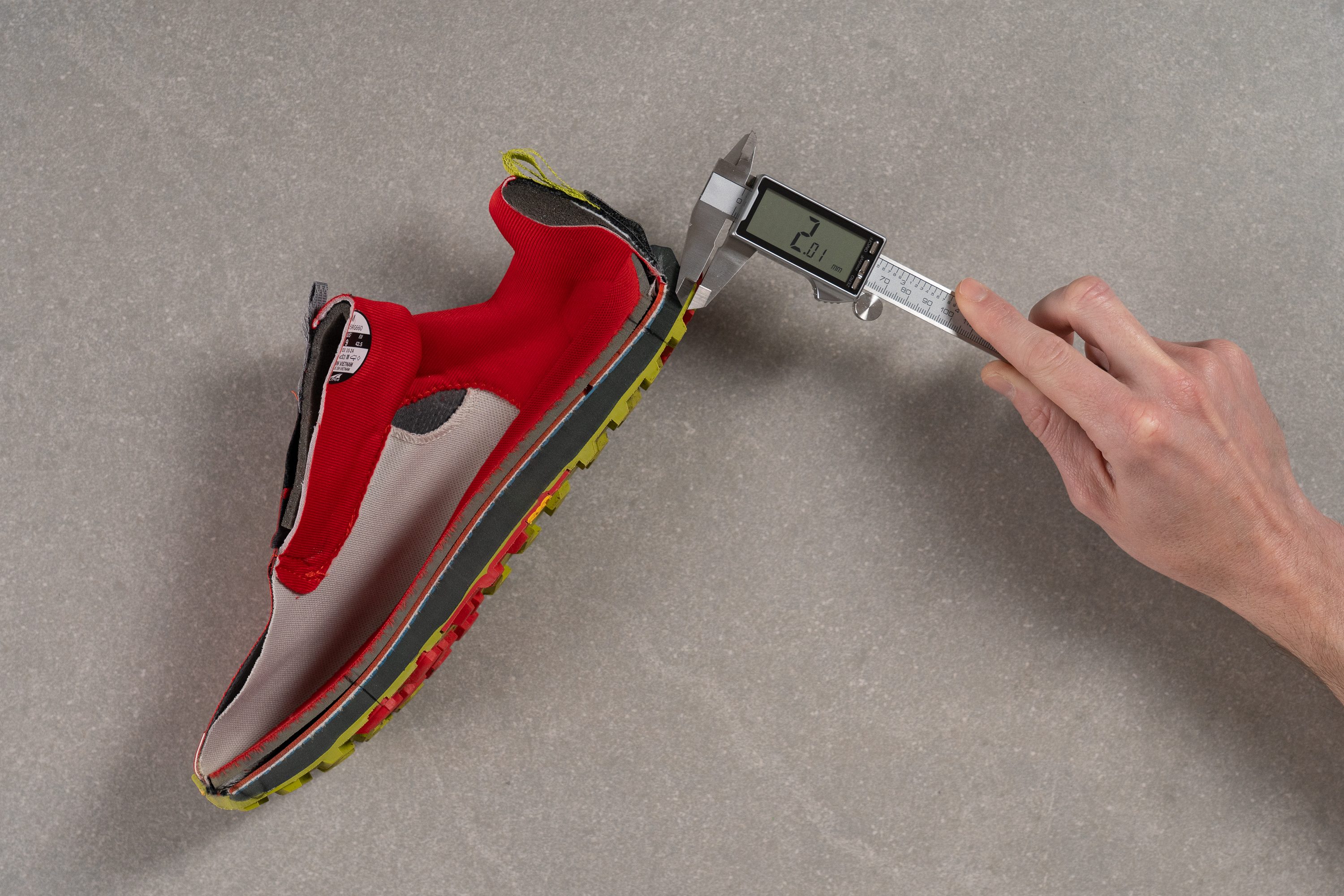
| Lone Peak 9 | 2.0 mm |
| Media | 2.2 mm |
Lone Peak 9 vs. 9+
Altra lanzó dos versiones diferentes, y puede que te preguntes por qué. Sabemos que, para muchos, lo lógico habría sido un único lanzamiento exclusivo con Vibram, pero... lo más probable es que eso haya sido imposible por el precio habitual de las Lone Peak. Además, también tendría sus desventajas.
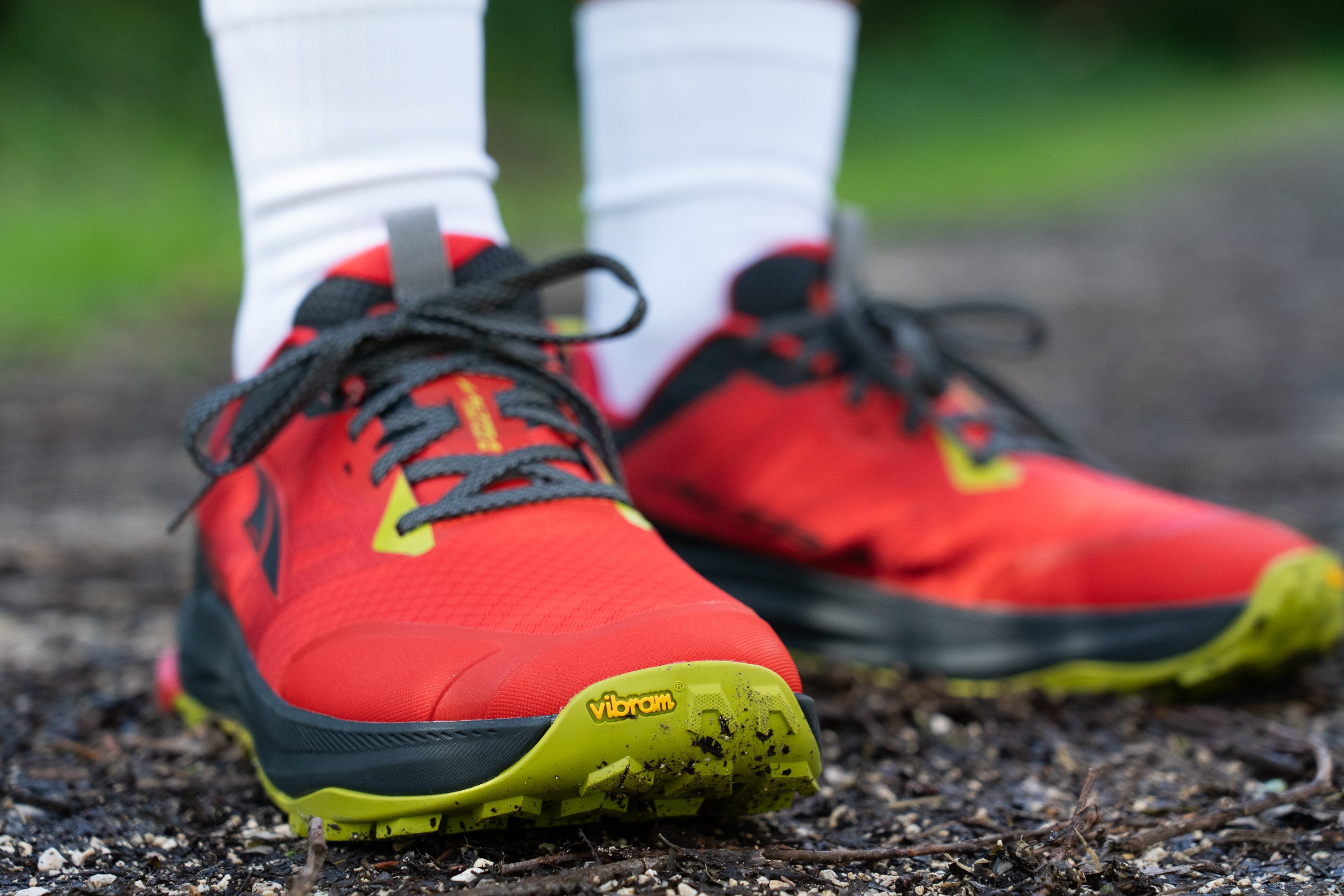
Por eso Altra lanzó ambas versiones, y aquí te explicamos cómo elegir la más adecuada para ti:
- Lone Peak 9: mismo precio que antes, suela exterior MaxTrac, más flexibles y un poco más de contacto con el suelo.
- Lone Peak 9+: más caras, suela exterior Vibram con mucho agarre, un poco más rígidas.
La disponibilidad es otro punto importante. En Europa, la opción estándar son las Lone Peak 9+, y es difícil encontrar la versión MaxTrac, que es más barata. Por otro lado, en EE.UU. y en la mayoría de las tiendas globales, las Lone Peak 9 son más comunes, pero las 9+ están en algunas tiendas y en la web de Altra.
Varios
Grosor de la plantilla
Según nuestras mediciones, la plantilla de las Lone Peak 9 es de 4,4 mm. Si quieres que la suela sea lo más baja posible, puedes quitarla, que es algo que también te dará un poco más de espacio en la zona de los dedos.
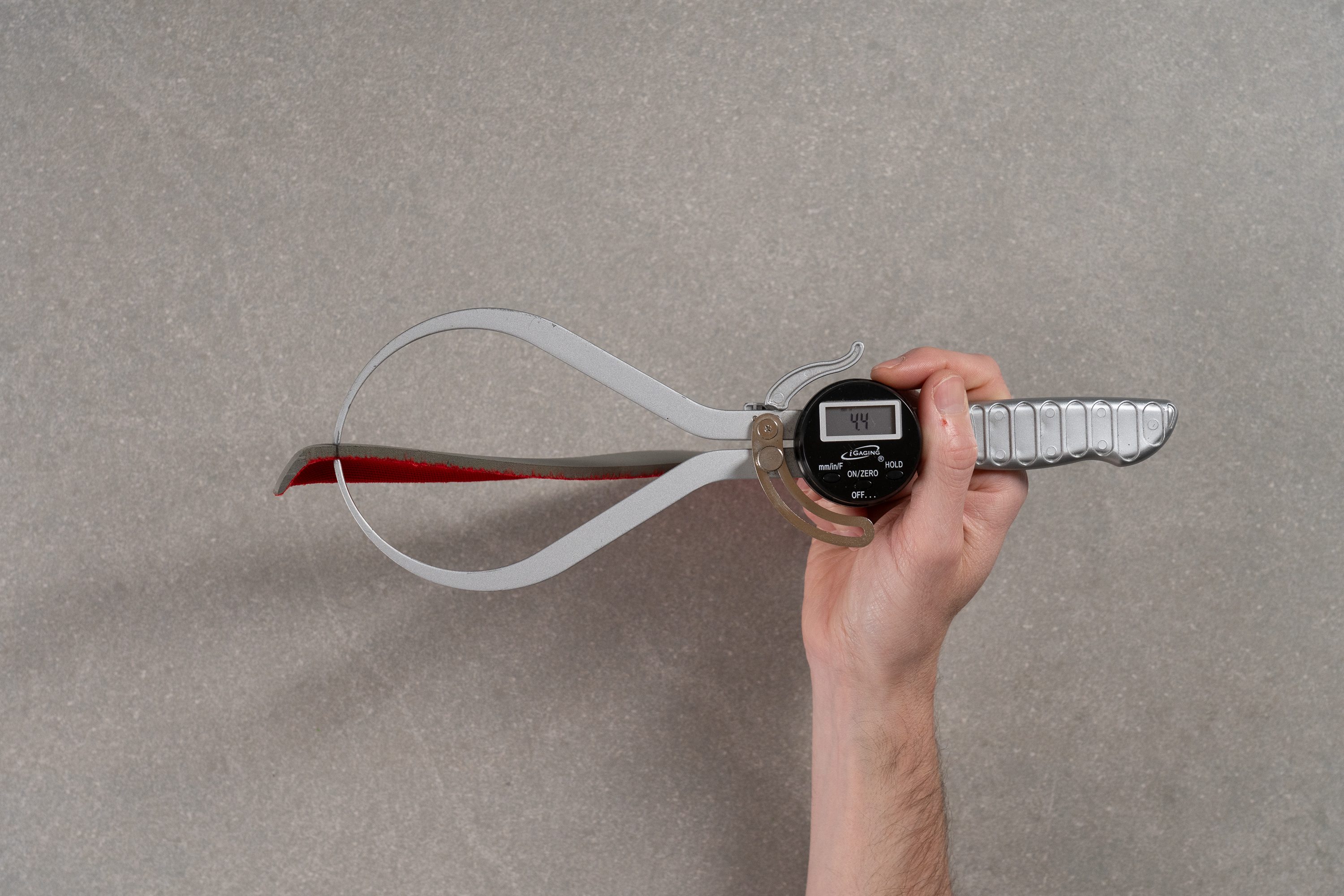
| Lone Peak 9 | 4.4 mm |
| Media | 4.7 mm |
Plantilla extraíble
No tuvimos problemas para quitarles la plantilla a las Lone Peak 9, aunque ponerles otras puede ser un poco difícil por la forma única que tiene su parte delantera.
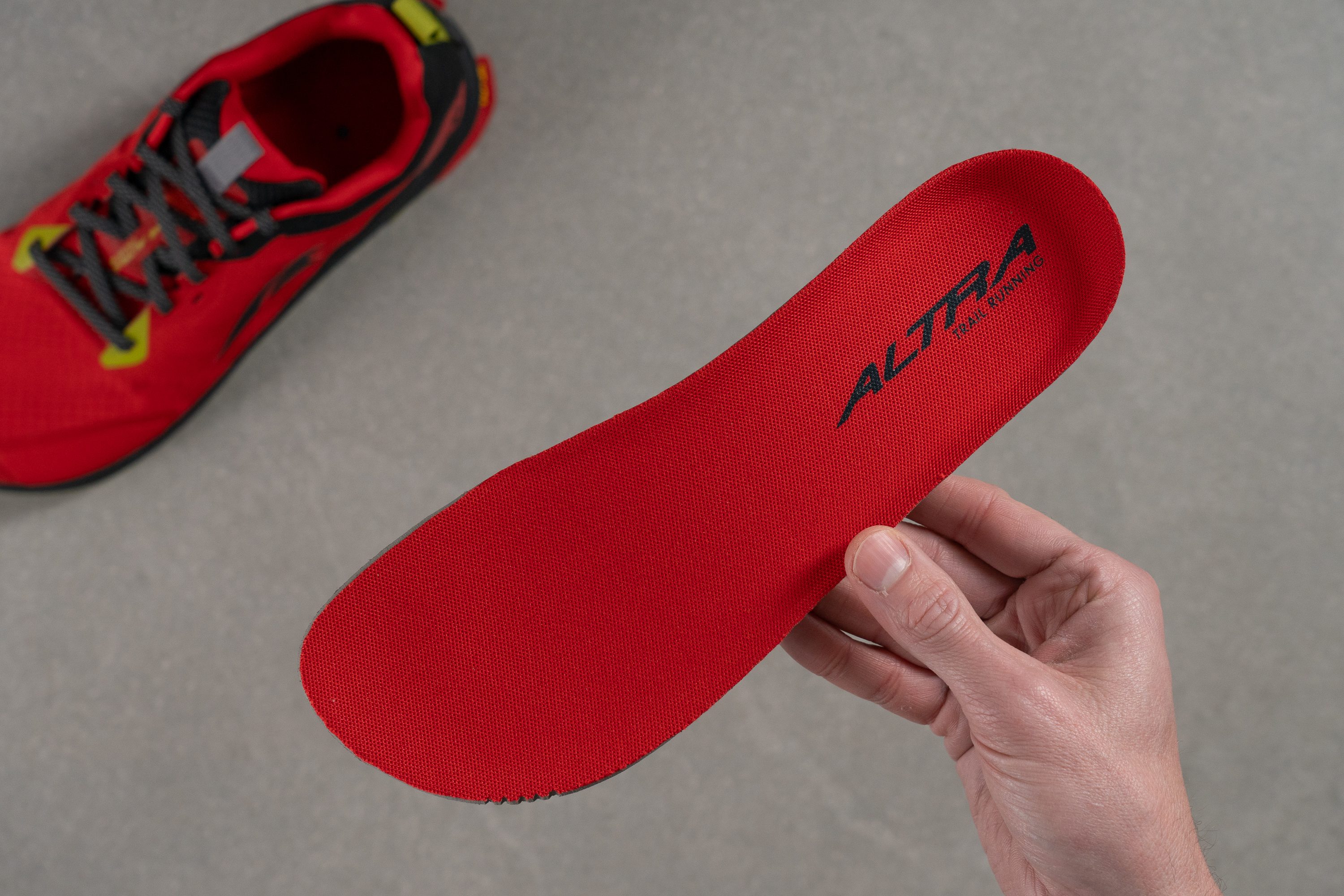
| Lone Peak 9 | Sí |
Rigidez de la mediasuela en frío (%)
Metimos las Lone Peak 9 en el congelador durante 20 minutos y vimos que se volvían un 25 % más rígidas.
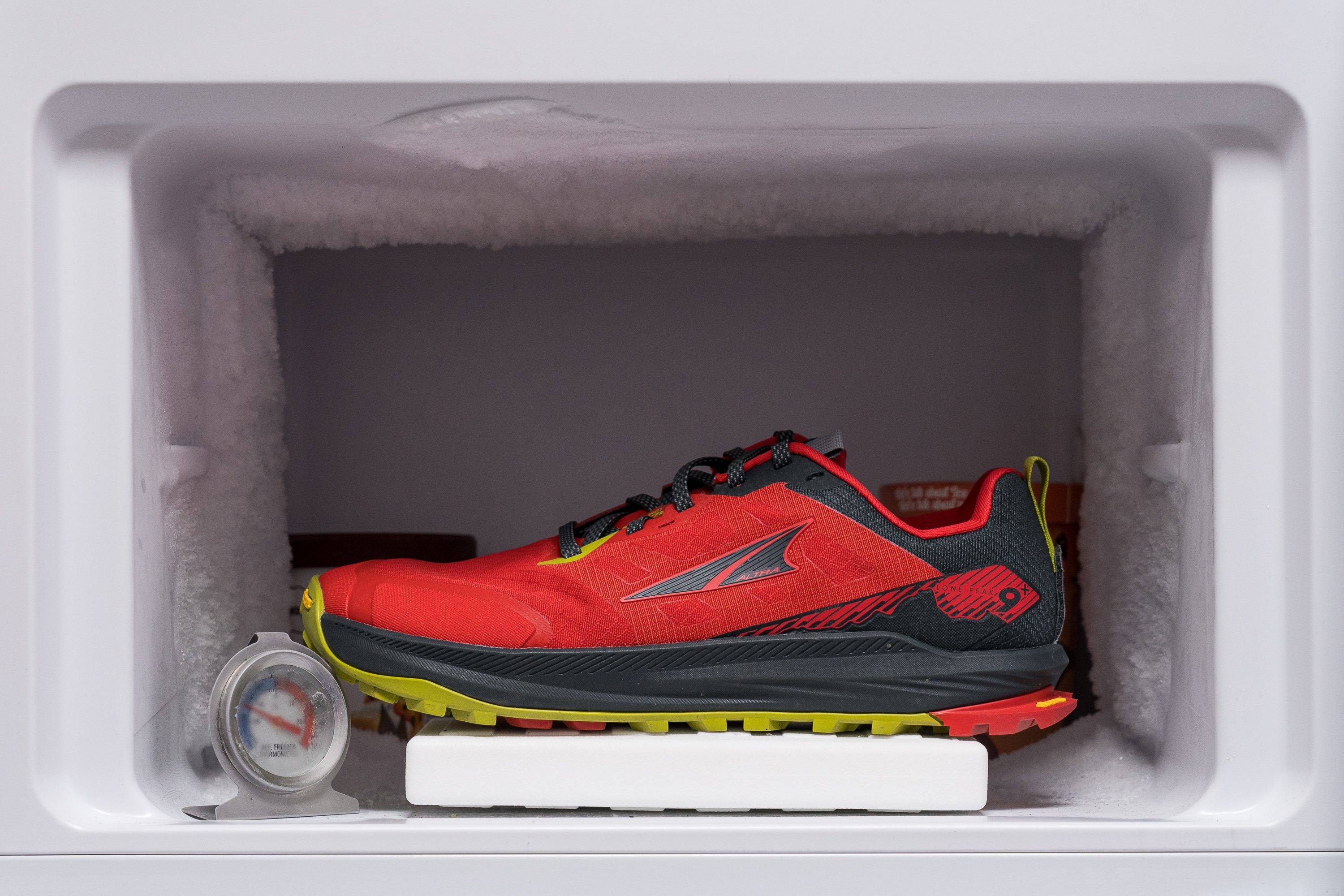
| Lone Peak 9 | 25% |
| Media | 26% |
Elementos reflectantes
Es una pena, pero las LP9 no tienen elementos reflectantes, que es algo que nos decepciona un poco.
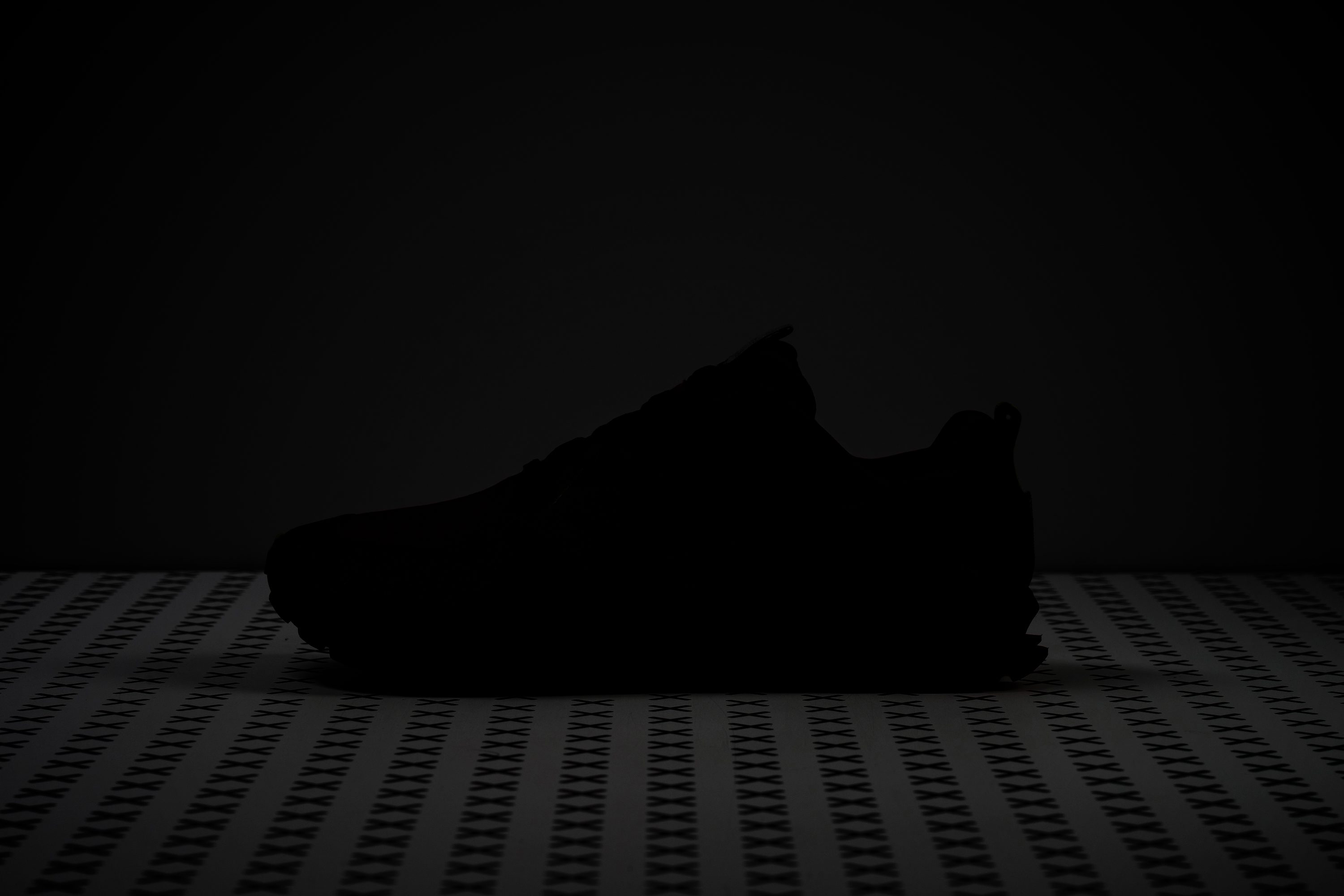
| Lone Peak 9 | No |
Acolchado de la lengüeta
Altra ha optado por un enfoque seguro en cuanto al diseño de los cordones y de la lengüeta. Este modelo tiene cordones planos preparados para el trail y ojales reforzados, creando una combinación muy resistente y duradera. También hay un ojal extra por si te quieres hacer el nudo del corredor.
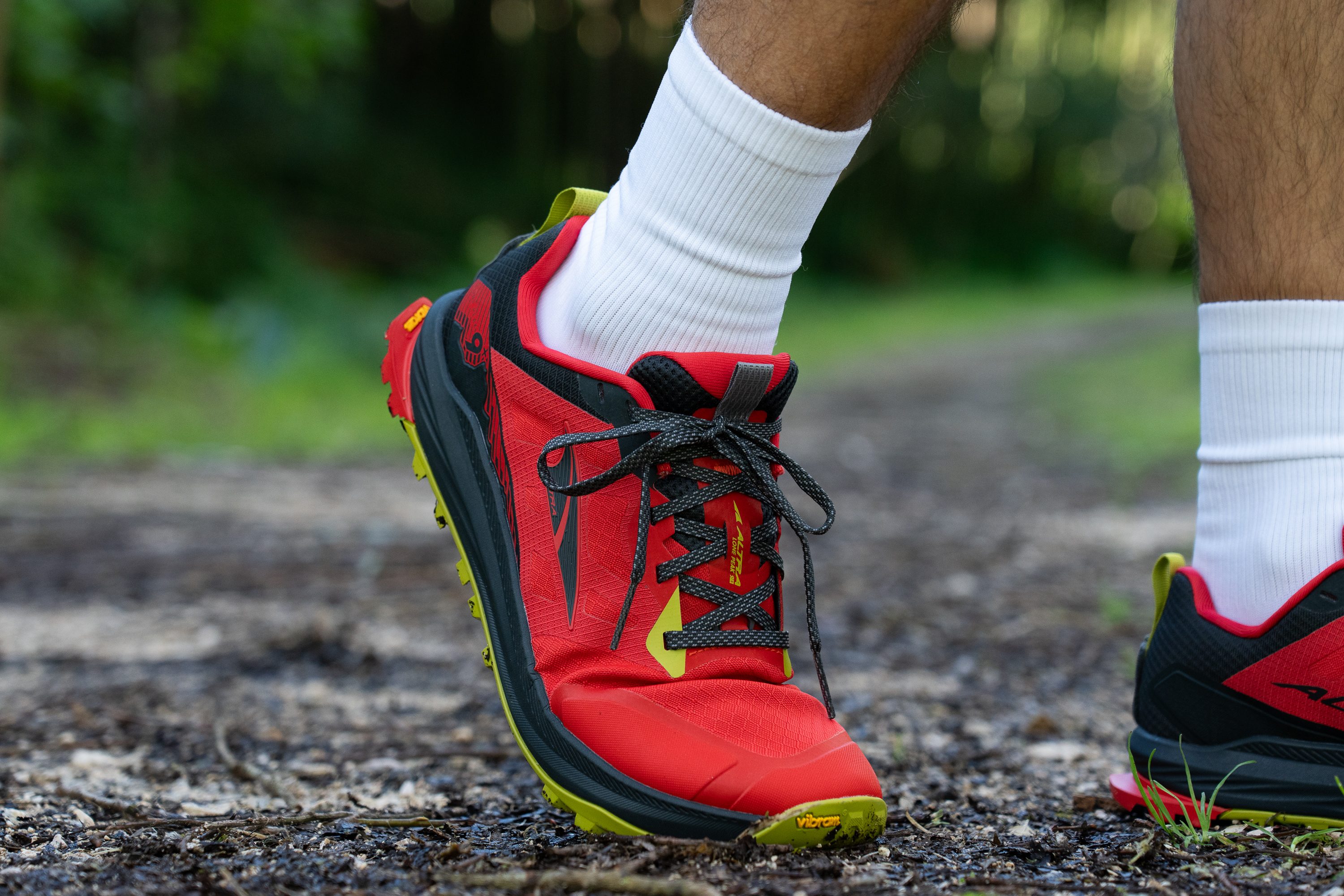
La lengüeta está bien acolchada, con 6,0 mm de espuma. Es un diseño cómodo y poco voluminoso que funciona muy bien en el trail. Creemos que le proporciona la comodidad suficiente al empeine sin hacer que se sienta demasiado, que es algo que también nos parece importante teniendo en cuenta que este modelo ya pesa más de lo que debería para su tamaño.
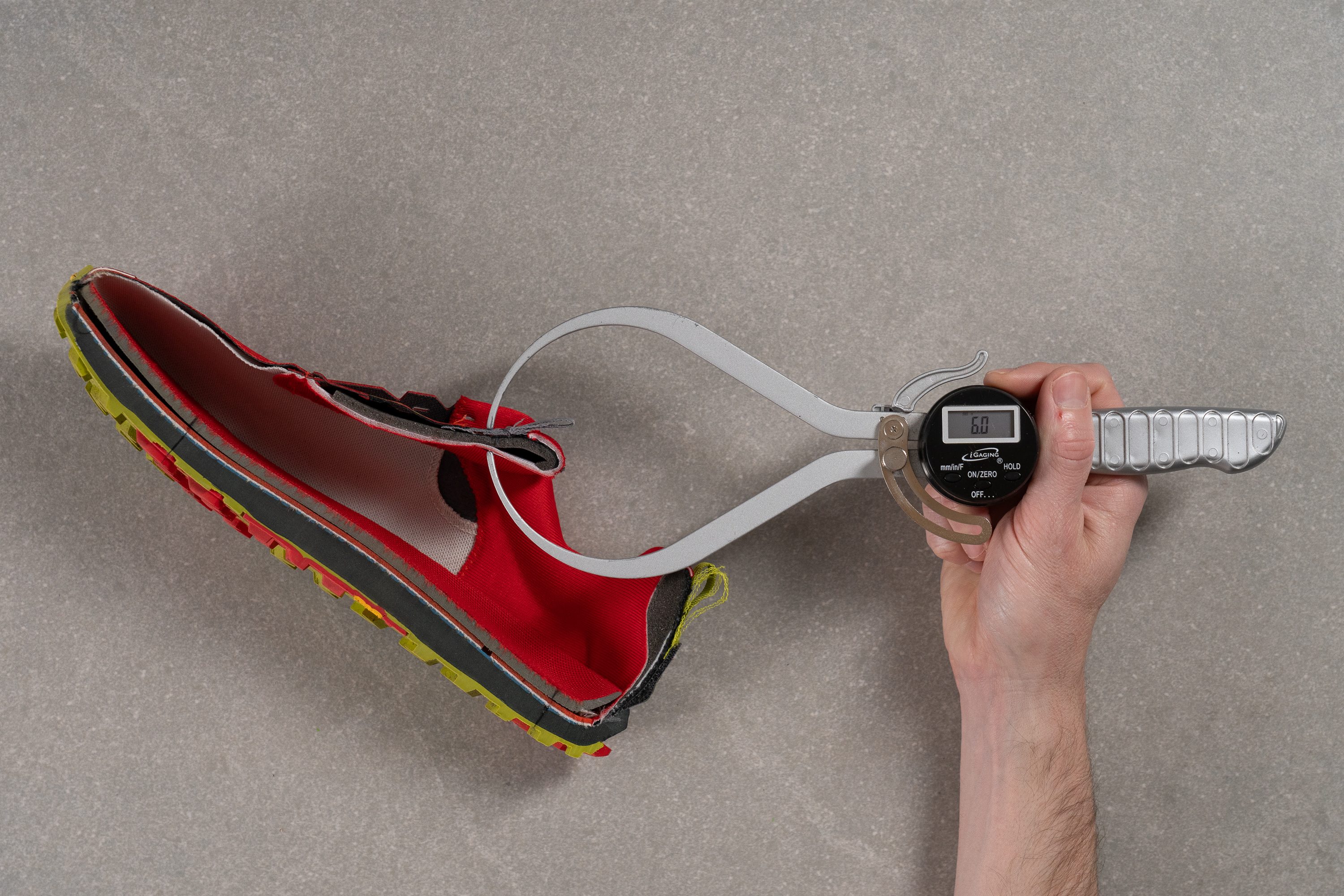
| Lone Peak 9 | 6.0 mm |
| Media | 6.4 mm |
Lengüeta: tipo de refuerzo
Descubrimos que la lengüeta está completamente unida a los laterales, que es un detalle estupendo del que muchos modelos de trail más altos se olvidan.
También queremos señalar que, en nuestras pruebas de uso, las Altra Lone Peak 9 no dejaron que se colase ni una piedrecita por la zona de la lengüeta, aunque el cuello bajo del tobillo todavía a lo mejor flaquea un poco en ese aspecto.

| Lone Peak 9 | Ambos lados (completo) |
Precio
Las Lone Peak estándar mantienen su precio de siempre, así que no tenemos queja. Por otro lado, la versión Vibram cuesta un poquito más, pero lo entendemos por el nivelazo de su suela exterior.
| Lone Peak 9 | $140 |
Tirador del talón
El tirador es ya un viejo conocido, y es que está presente en las anteriores Lone Peak. Es el mismo, y no es encanta que no pierda esa sensación de que está listo para el trail.
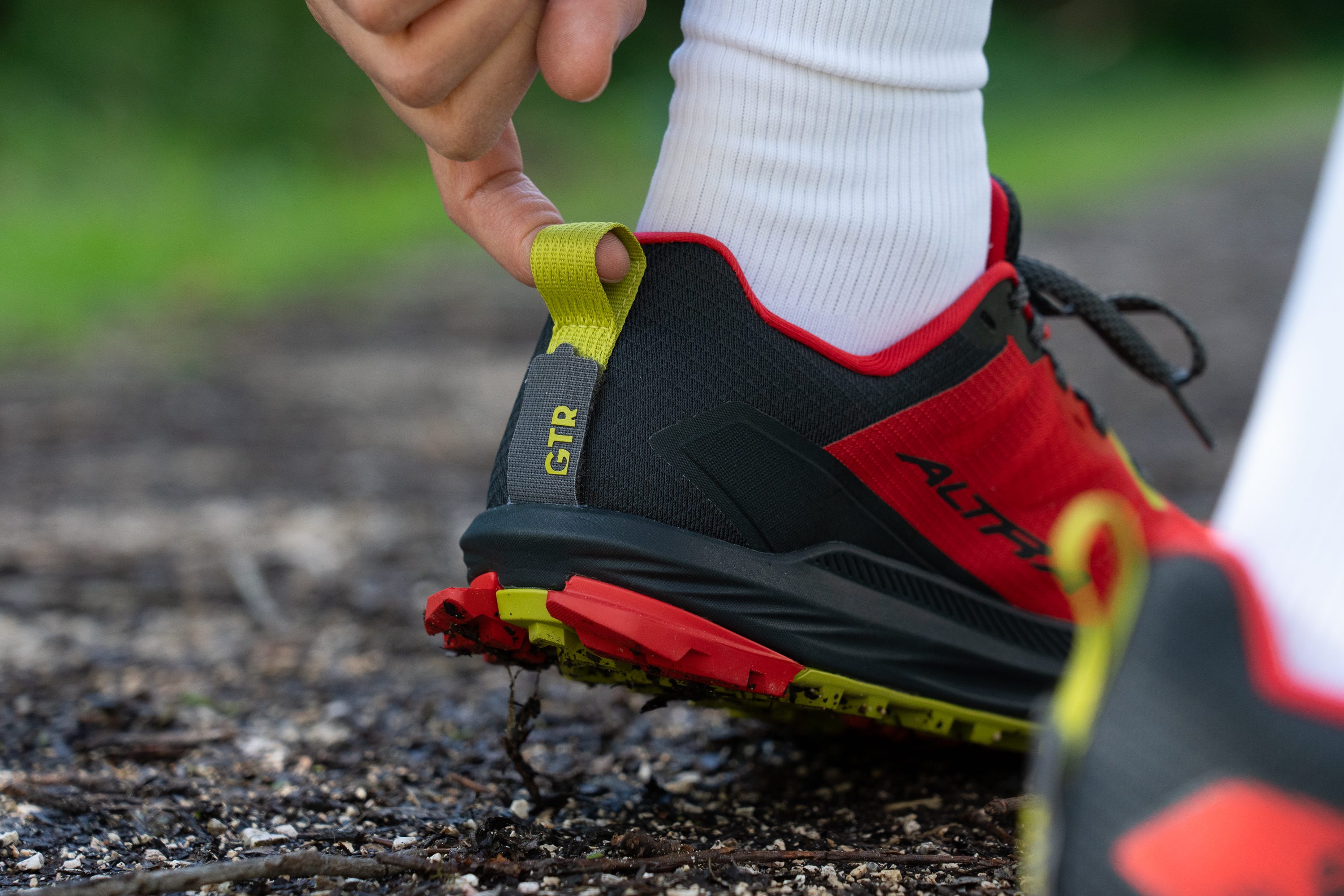
| Lone Peak 9 | Tirador circular |
GaiterTrap
Hay un gancho GaiterTrap en el talón para fijar las polainas sin tirantes de Altra, que las pones en dos segundos y son ideales para los senderos llenos de piedrecitas, hojas y tierra. Teniendo en cuenta el diseño del cuello del talón de las Lone Peak, la verdad es que en este caso nos parecen incluso más acertadas.
